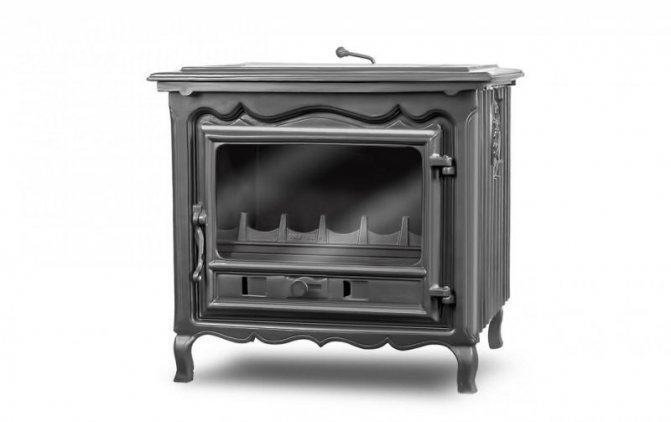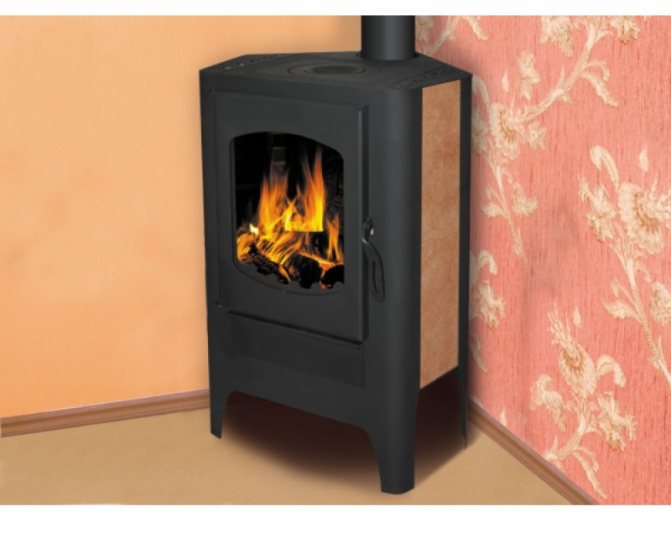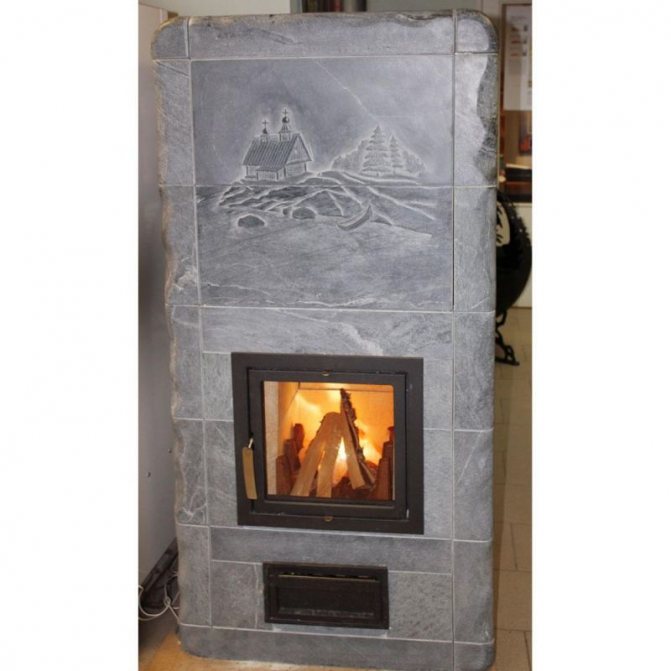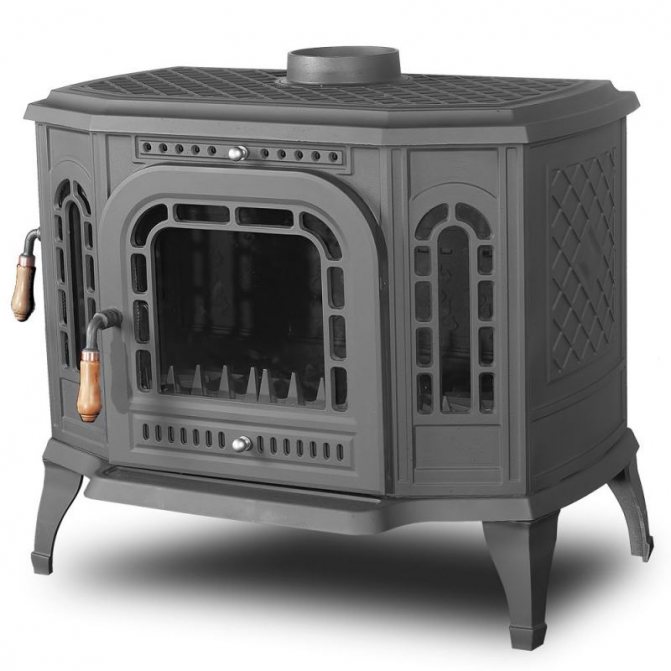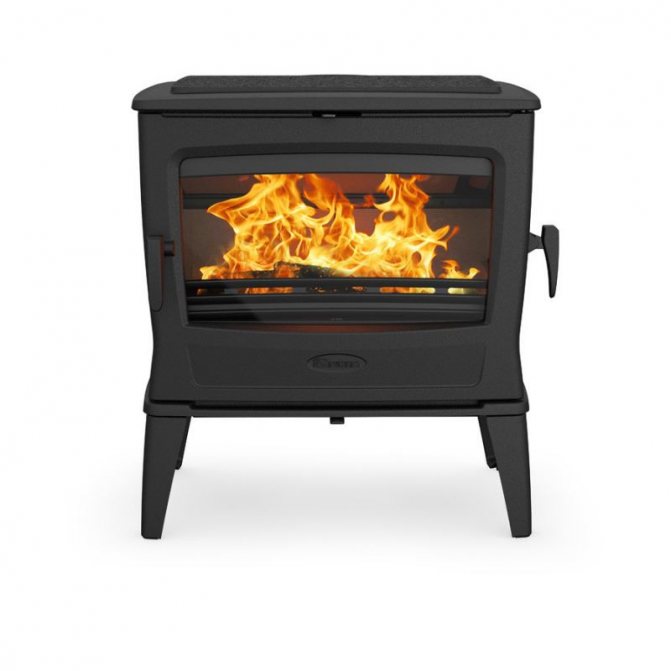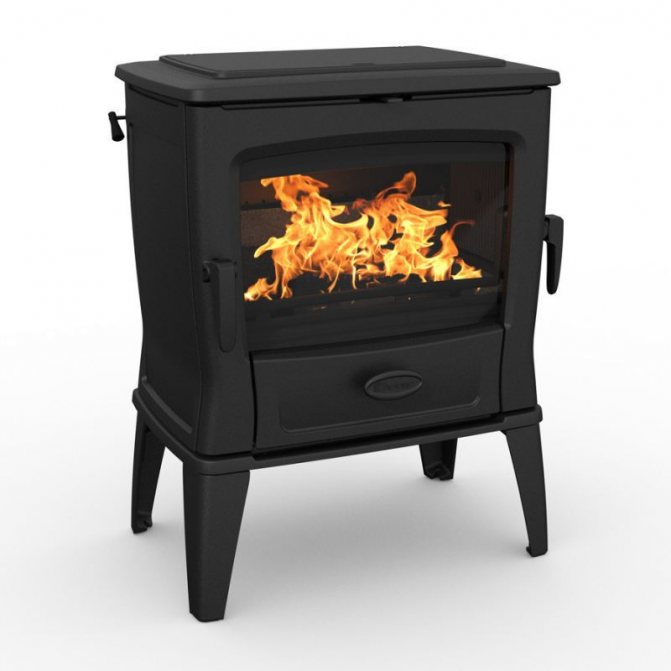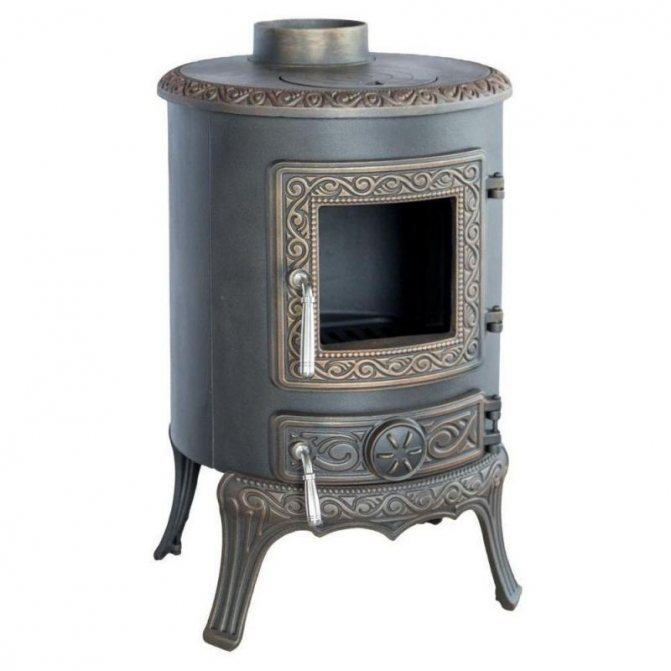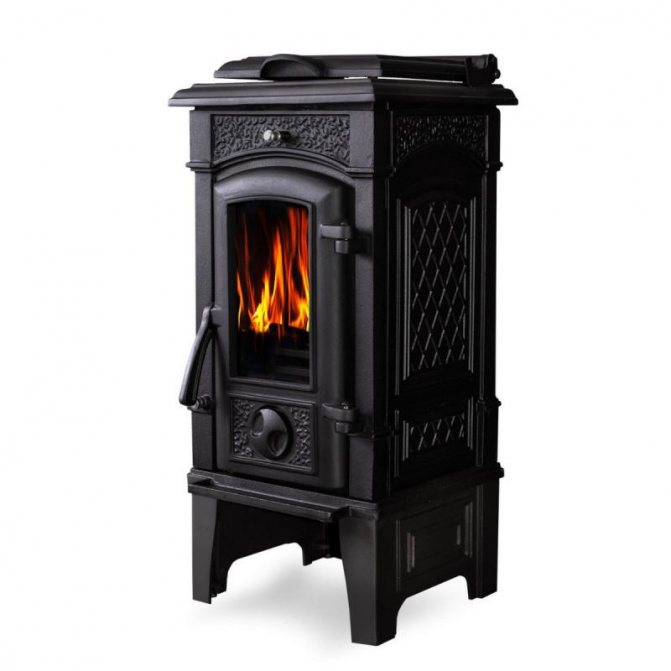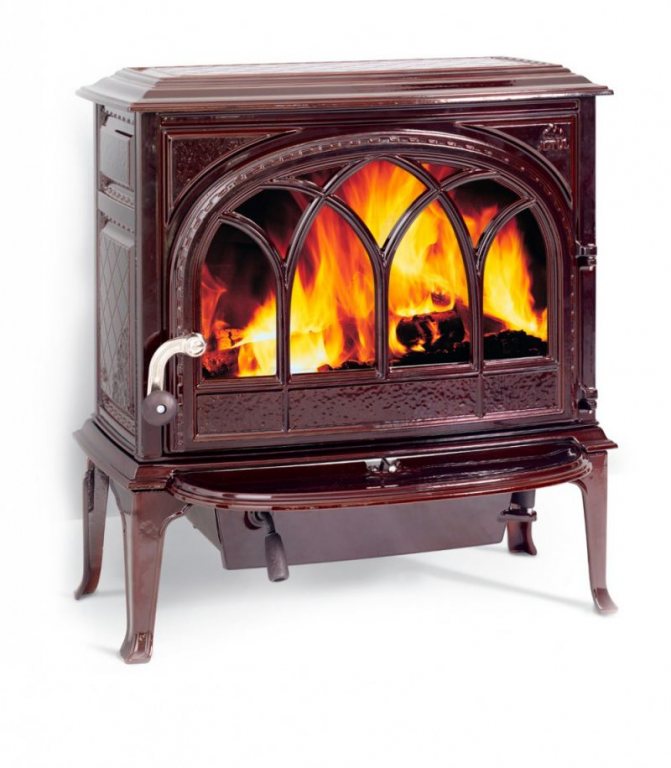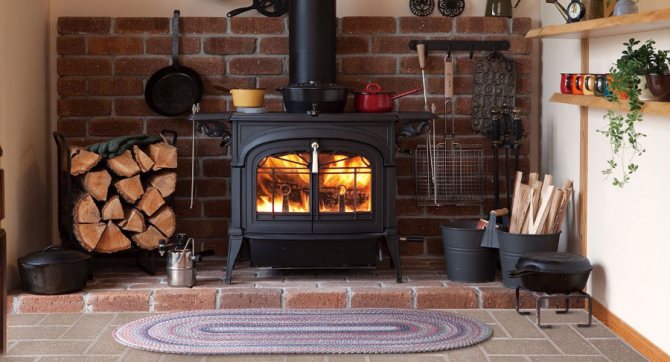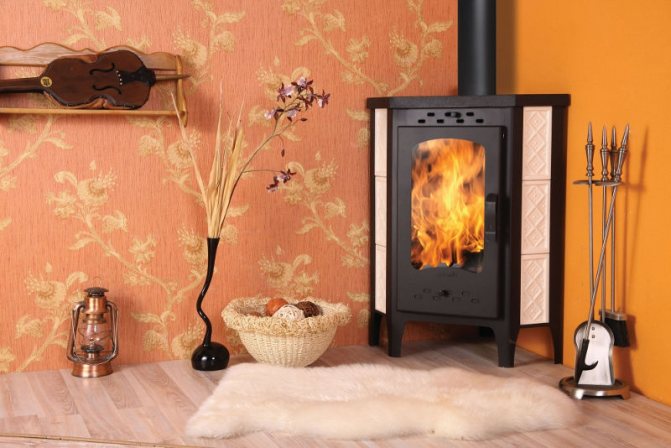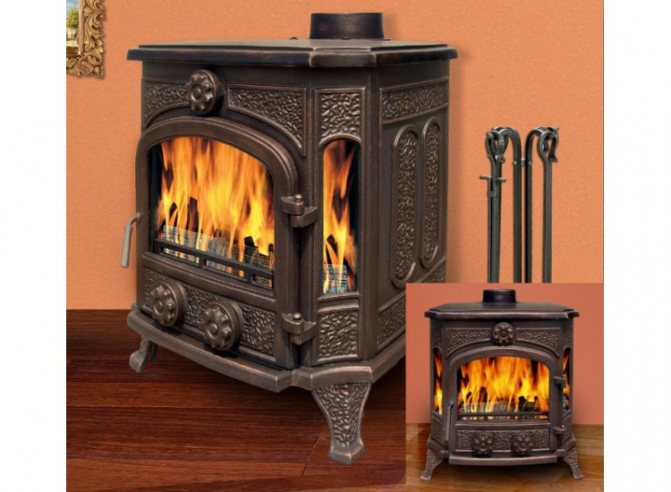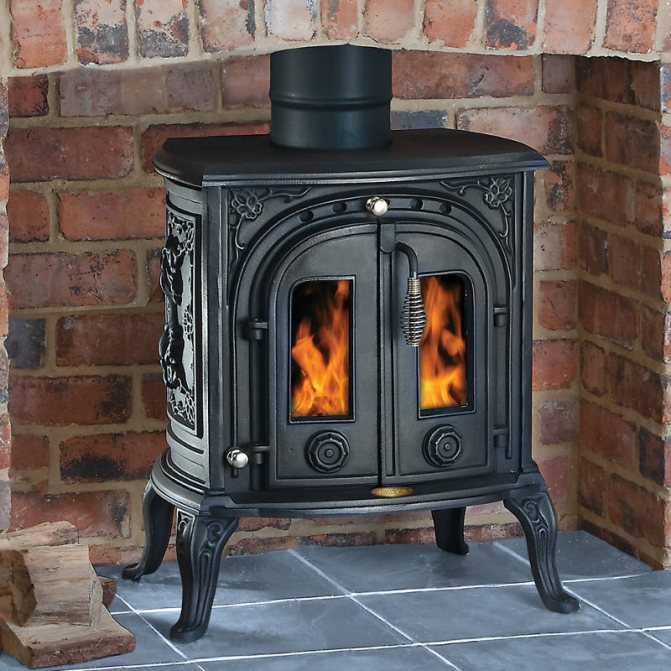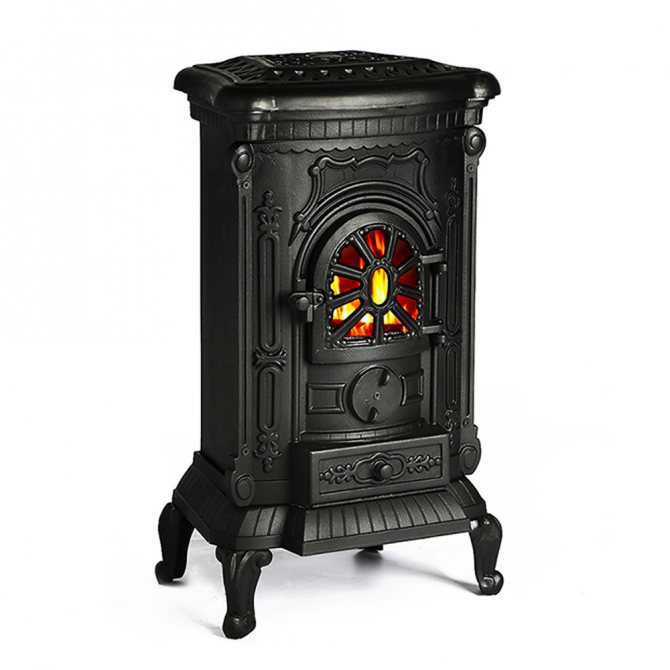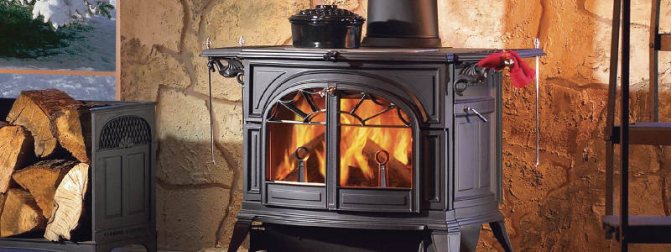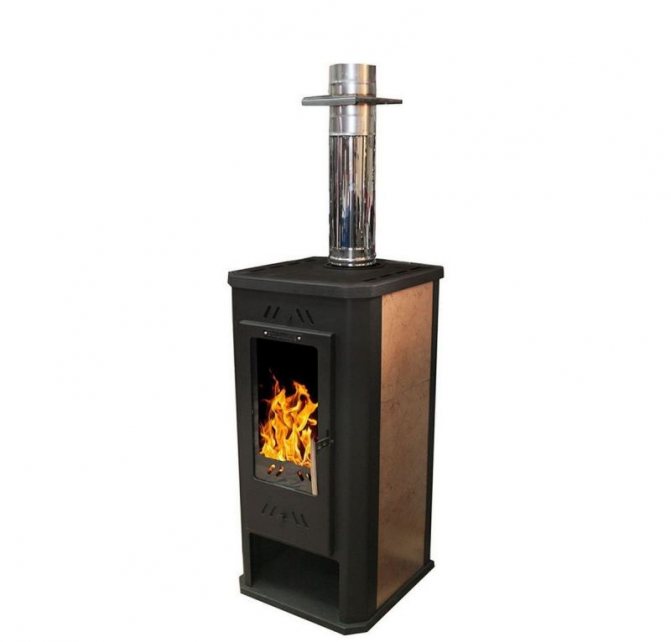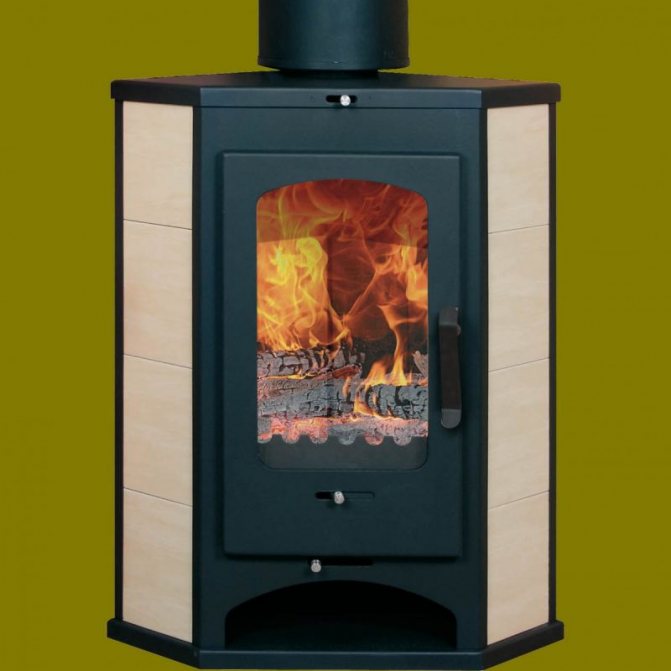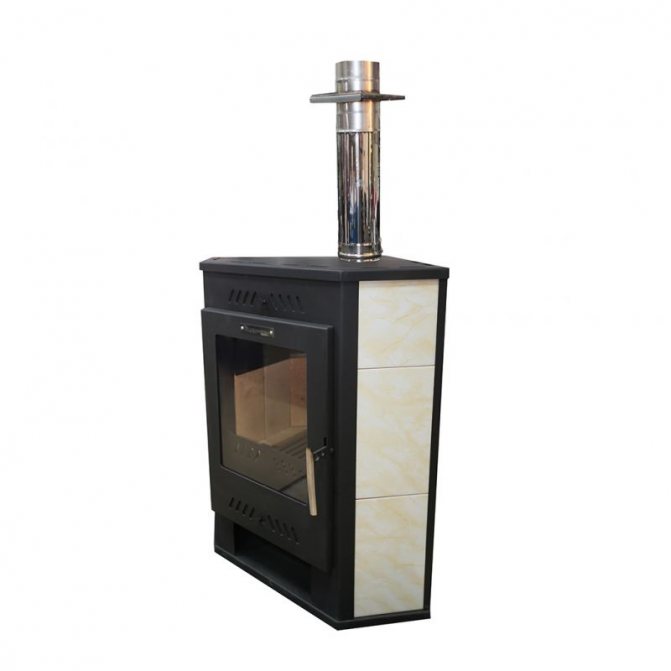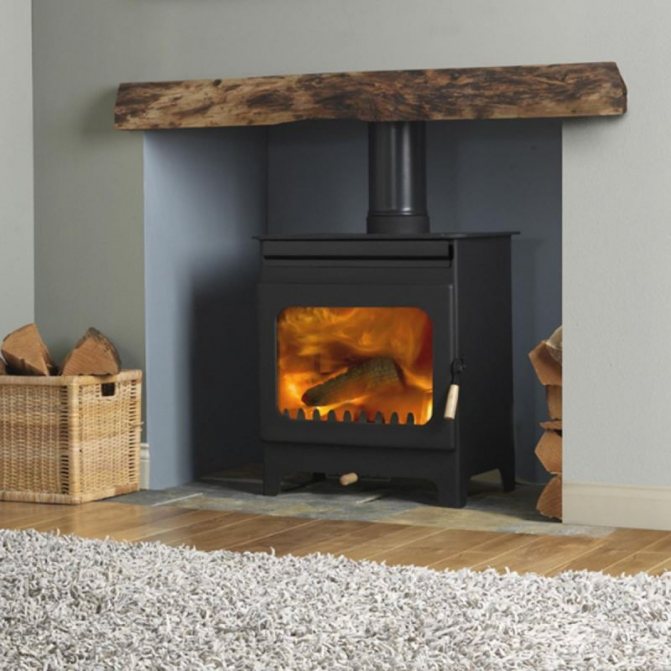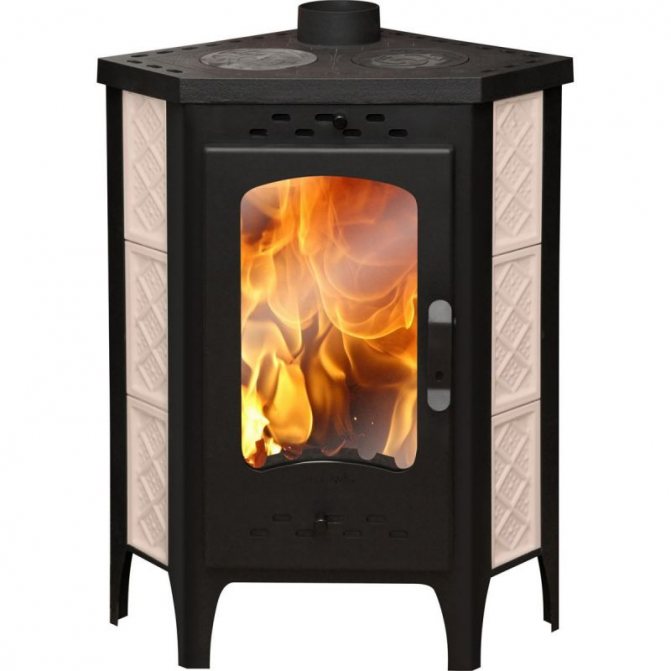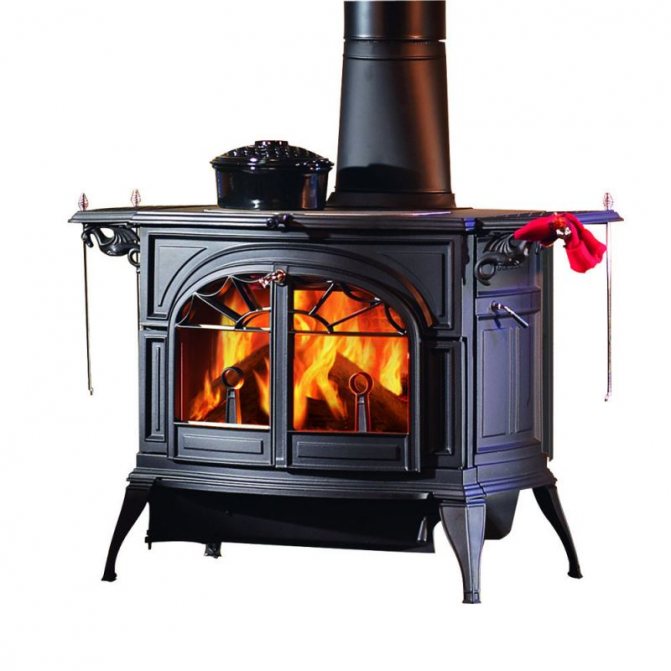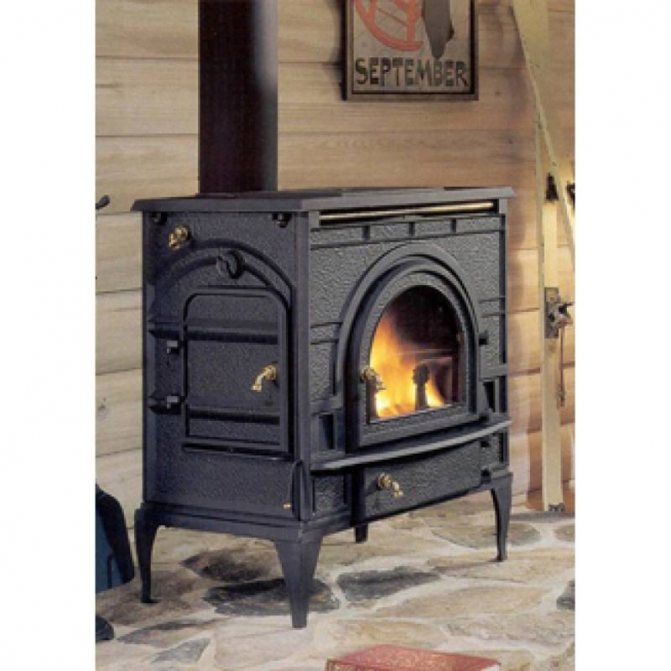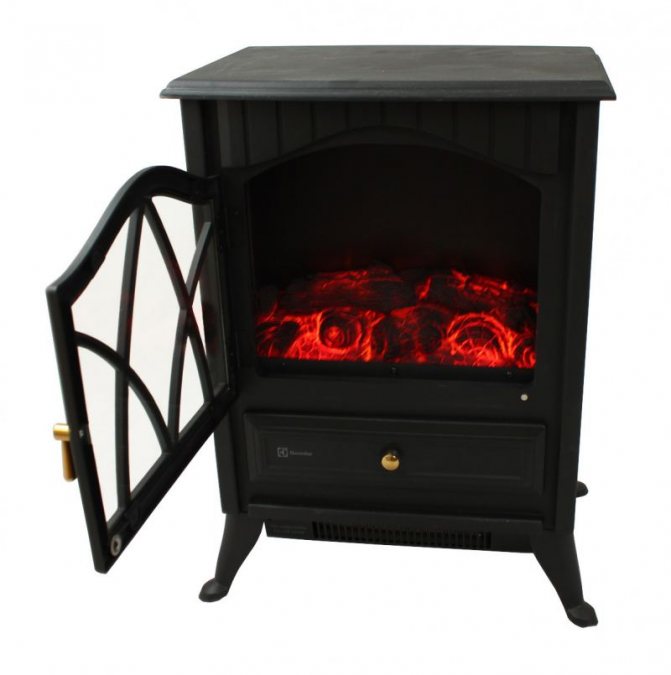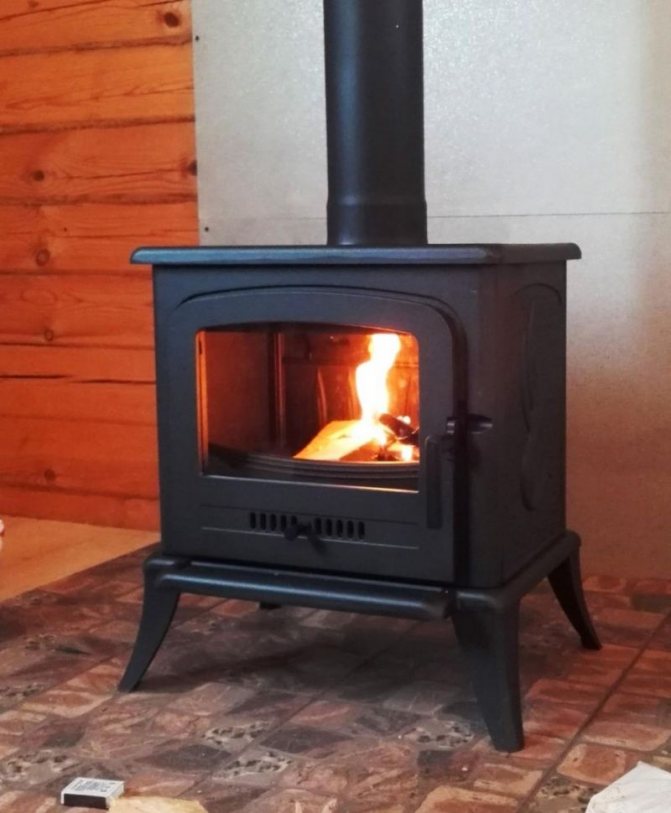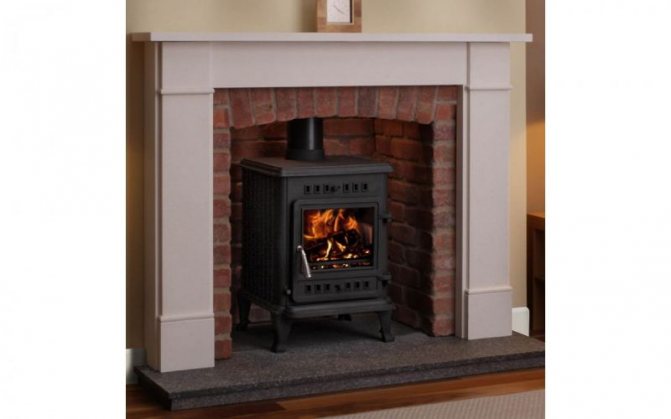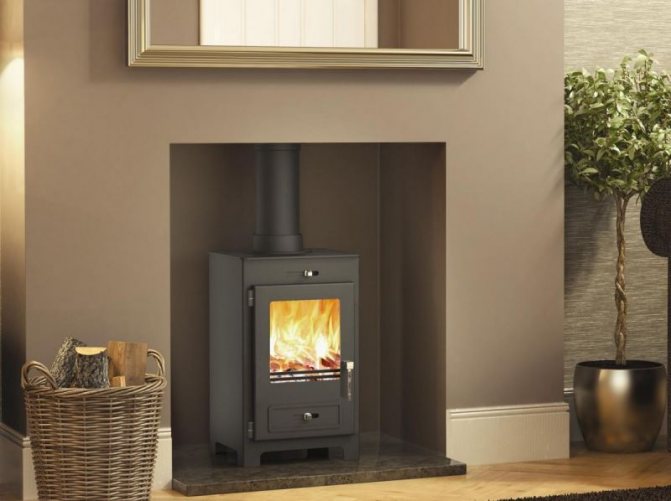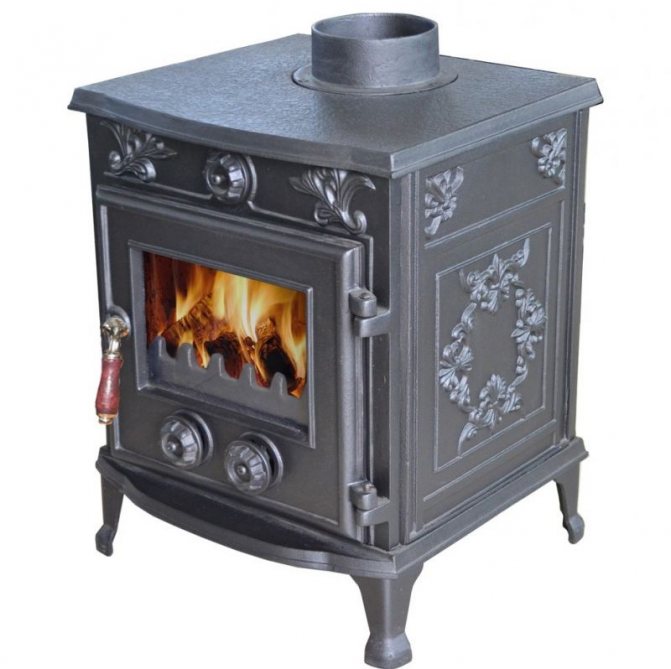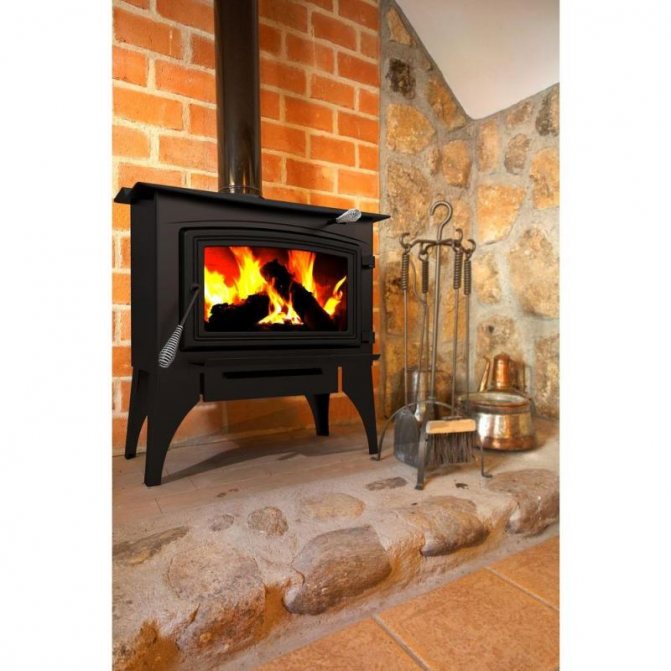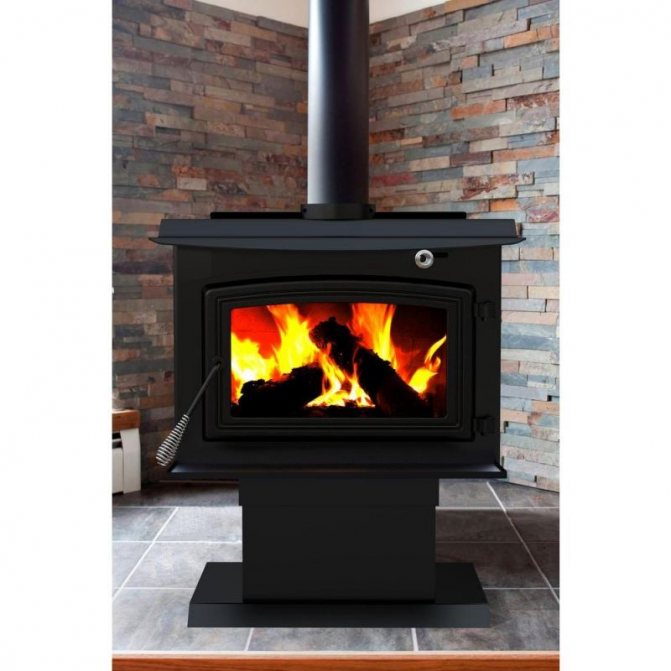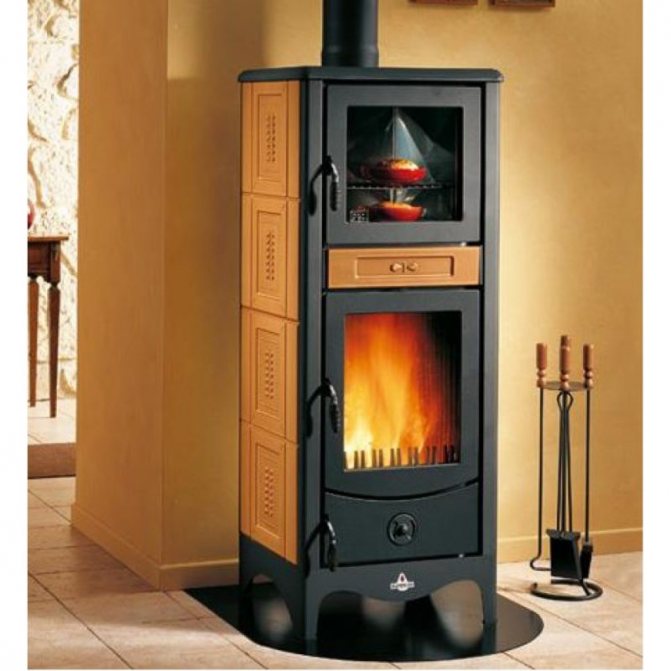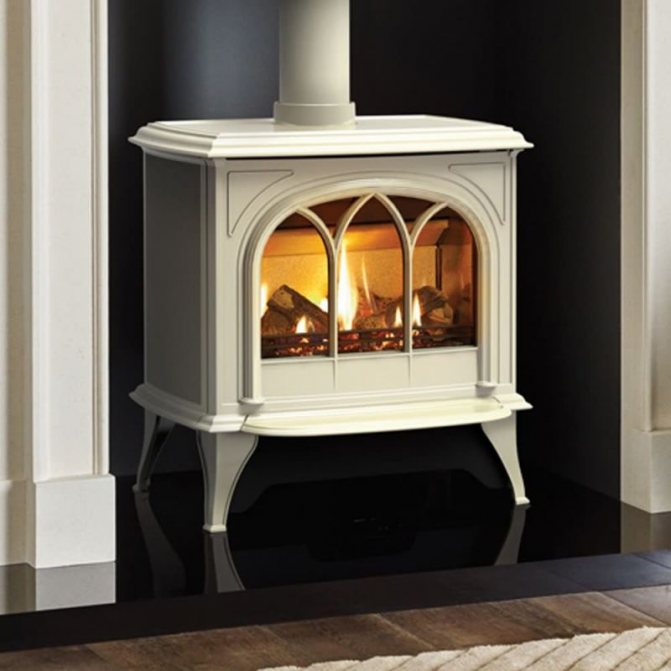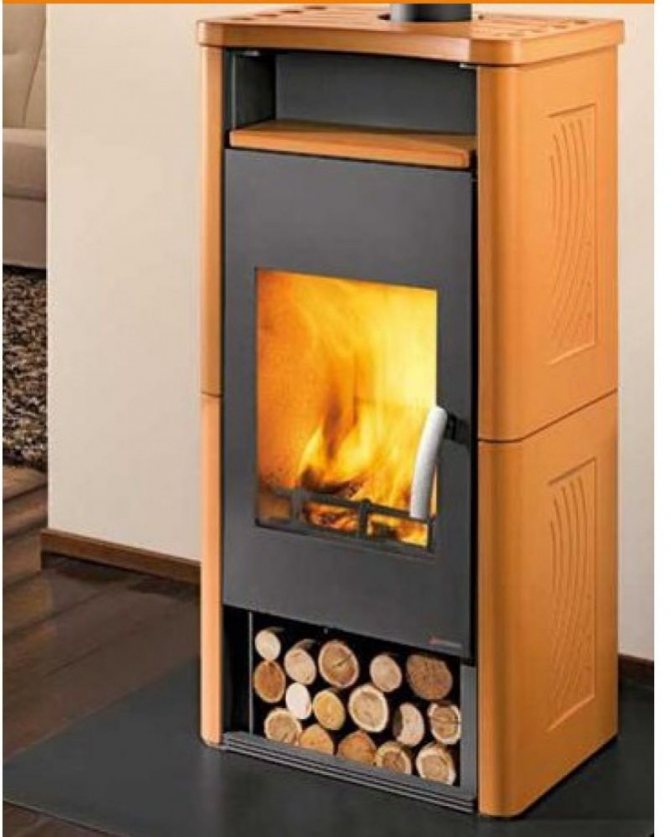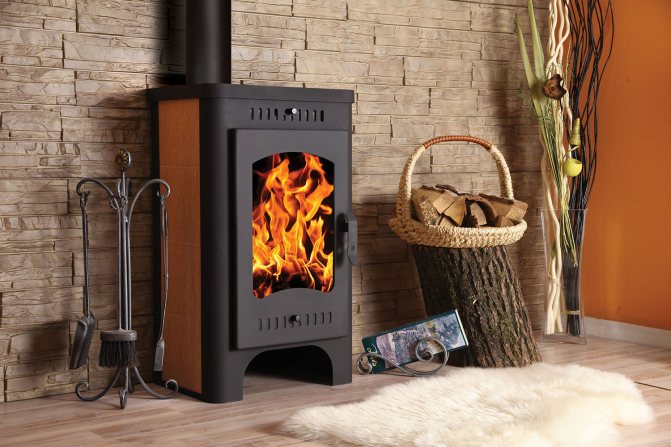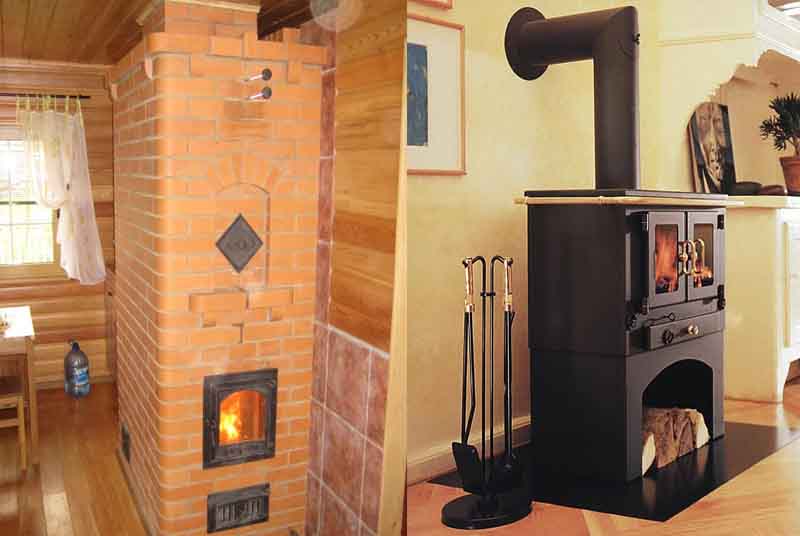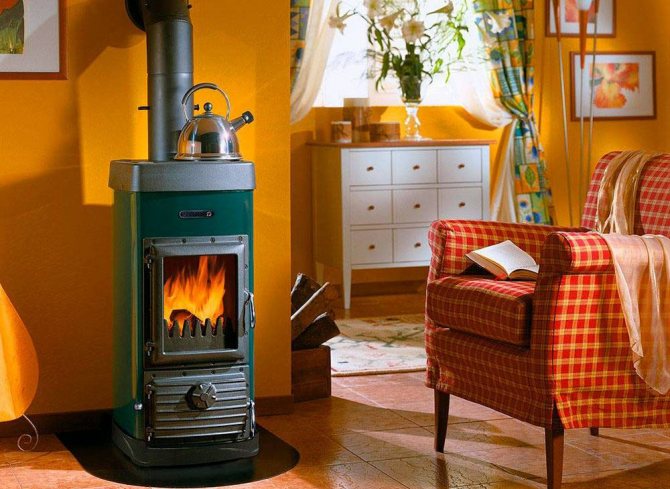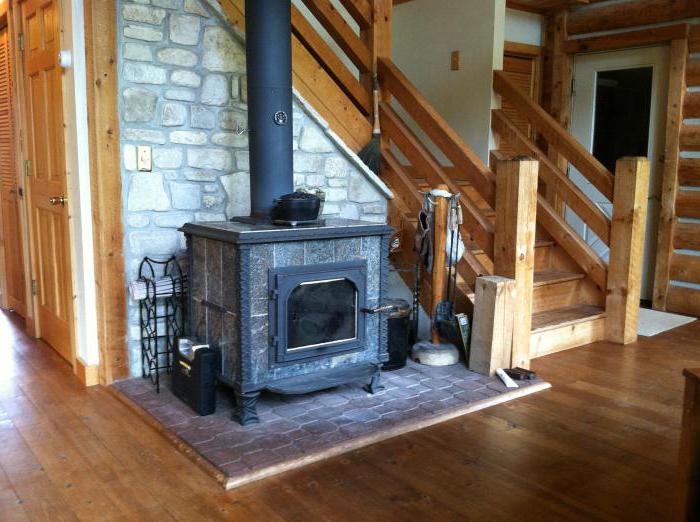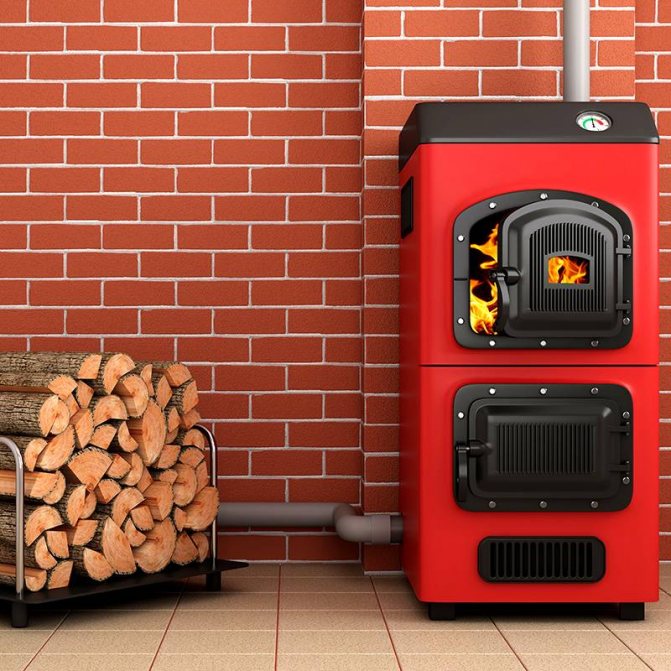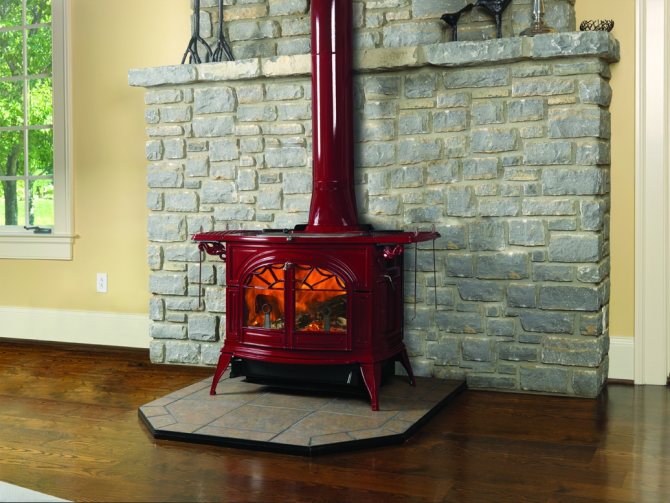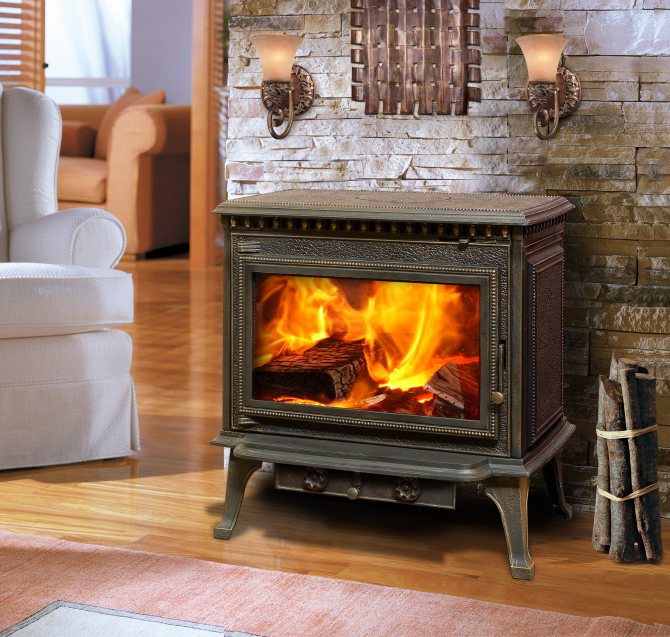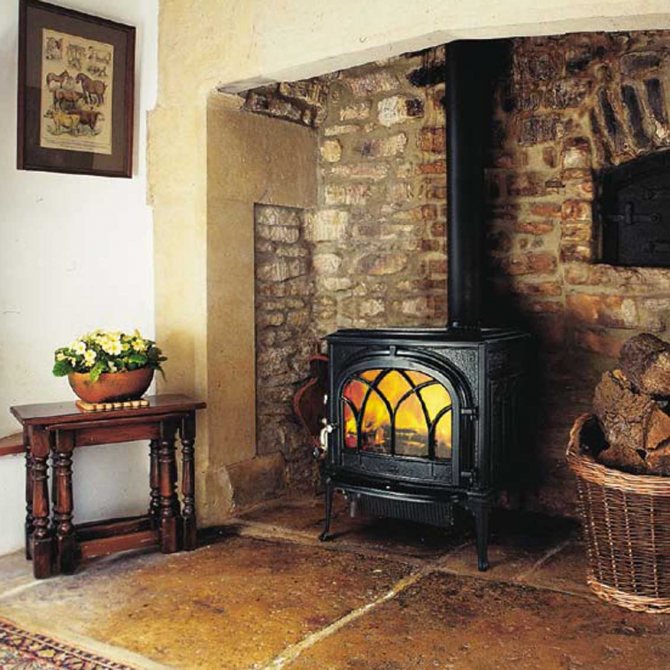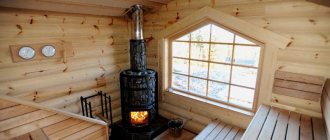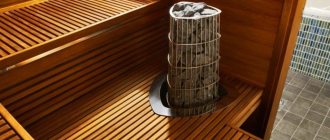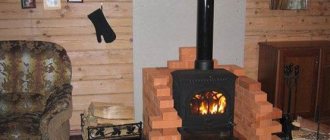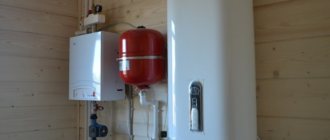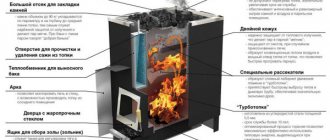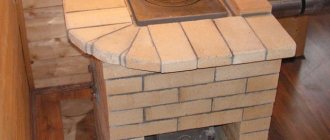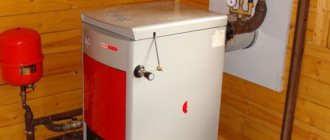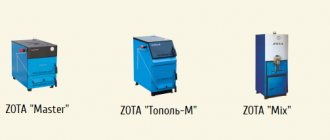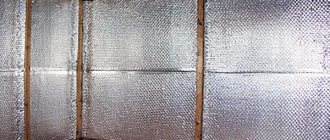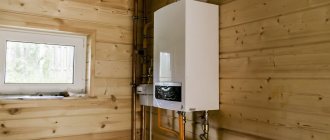Cast iron is a fairly well-known material for heating stoves, dishes, and various things. Furnaces made of such material are especially relevant in the modern world.
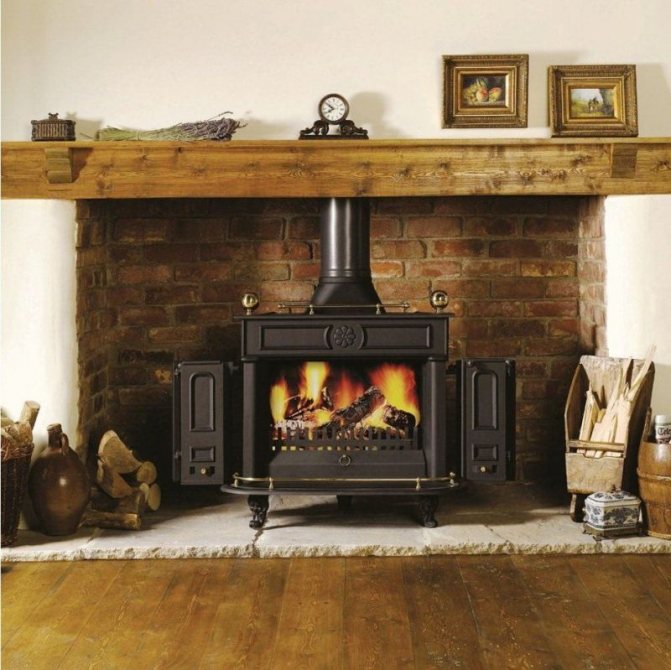
Cast iron stoves are used not only for heating a house or a country house, but also for a bath. People who decide to use this option for heating their homes need to carefully consider the choice.
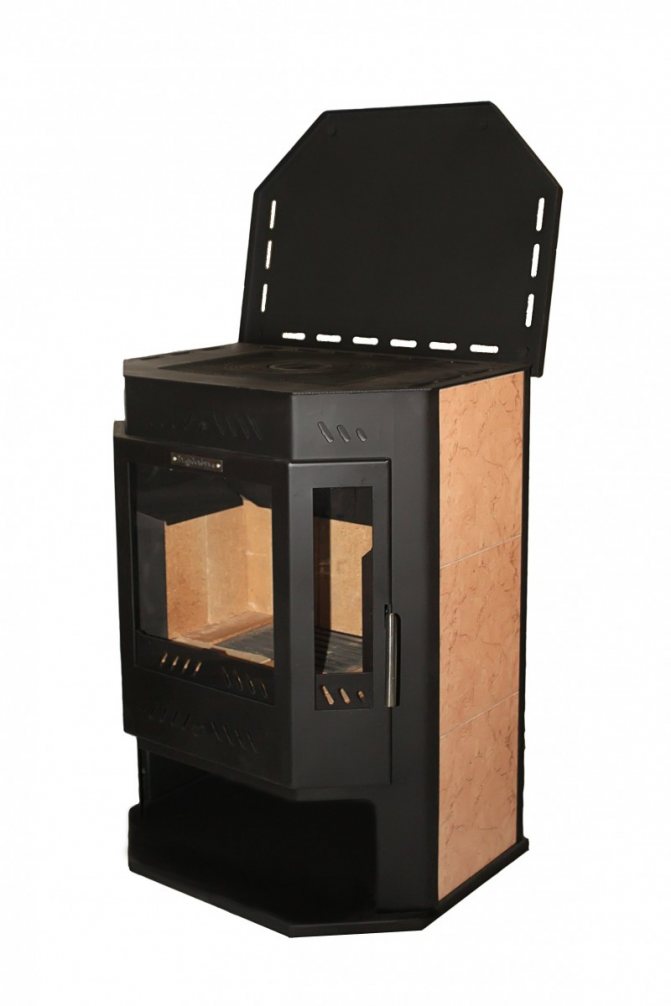
In the photo of cast iron stoves, you can see any design execution that could only be thought of. However, you won't be able to choose an option for your home based on photographs; a special approach is needed here.
In this article we will tell you a little about cast iron stoves and the features of their choice.
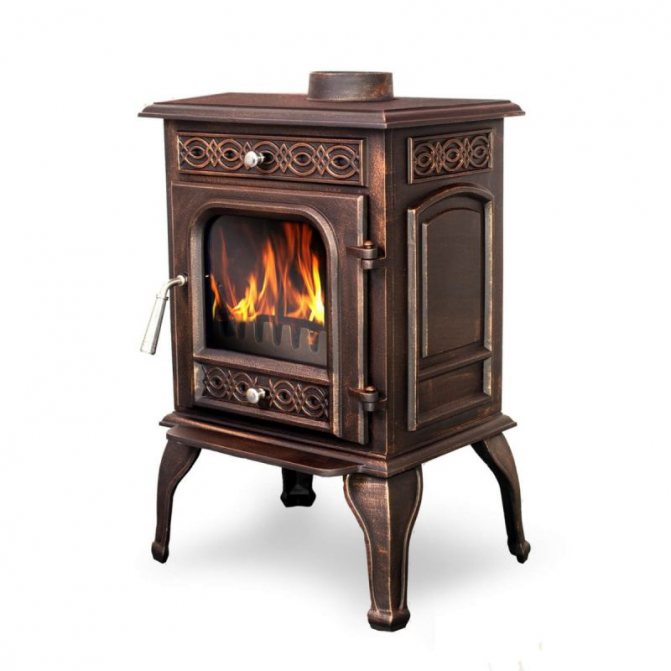

What are the furnaces made of cast iron
As is the case with any other types of household heating stoves, cast iron ones have some subdivision by type. We will consider the varieties of cast-iron wood-burning stoves, as they are most suitable for any living conditions.
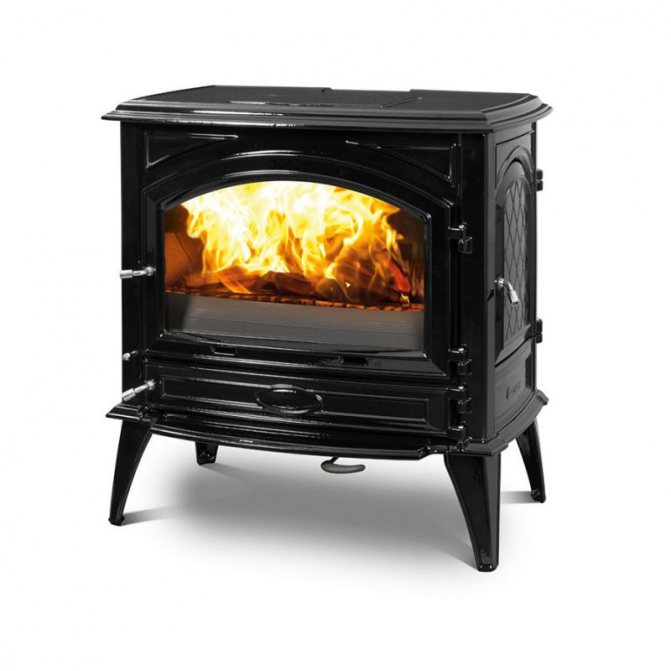

Here are the types of wood-fired cast iron stoves:
- The cast-iron stove-potbelly stove is a classic wood-fired heating, which is most suitable for summer cottages.
- The stove is an ordinary cast-iron fireplace.
- Cast iron heating and cooking stove - it has a compartment for cooking.
- Long burning cast iron fireplace stove.
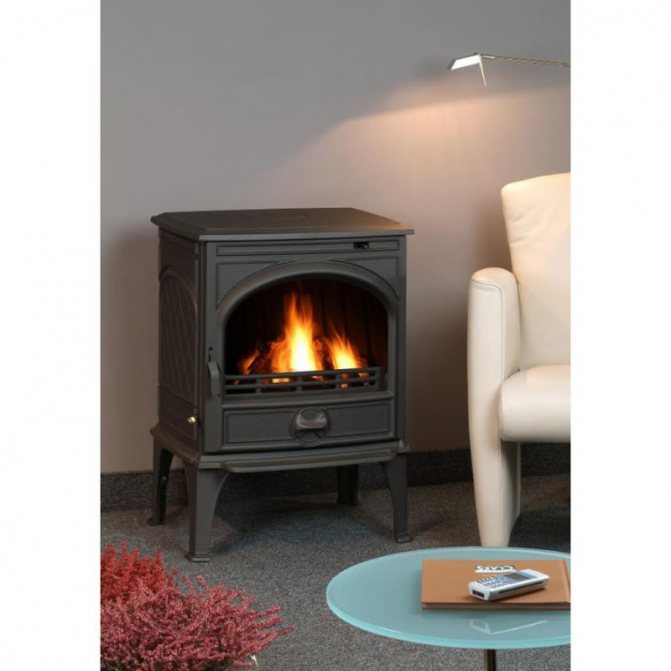

Views
Depending on the set of characteristics and design, cast iron wood stoves can be divided into three groups:
- Heating only for heating
- Heating and cooking stoves equipped with a cooking surface
- Fireplace stoves with exquisite design.
The design of heating and heating and cooking models is generally similar... The cast iron body can be of almost any shape: square, rectangular, prismatic or round. There is a firebox inside it, below which there is an ash pan, combined with a blower. It can be equipped with a door or drawer-shaped. The door of the fuel chamber can be blind, cast iron, or heat-resistant glass. The ash pan is separated from the firebox by a grate.
Inside the chamber there is a smoke circulation with several turns. Passing through them, the smoke gives off heat to the cast-iron walls, and it cools down. At the same time, the thick-walled construction of the stove warms up evenly, but does not heat up like a steel one. Due to this heat exchange, cast iron stoves have a high efficiency - most of the heat obtained from the combustion of firewood is transferred through the walls to the room.
The upper plane of the heating and cooking models, in addition, is equipped with a hob. It can be solid or consist of several hotplates with increased heat transfer. Such a surface allows you to avoid the installation of tiles for cooking - for a small country house this is a definite plus.
Fireplaces heat the room only during the heating process - due to their open design, the radiant energy from the flame spreads throughout the room, and the walls of the fireplace warm up poorly, and after the firewood burns out, they quickly cool down. Therefore, fireplace stoves are usually installed in the living room of a country or country house - they are intended mainly to create comfort and relaxation, and not for prolonged heating.
If you want not only to heat the house, but also to admire the living fire, choose a pyrolysis oven with a glass door, which combines the functions of long-term heating with a decorative fireplace.
Cast iron pyrolysis furnaces
The most effective are furnaces with a long burning effect. They can operate both in the active combustion mode and in the pyrolysis mode - two-stage fuel combustion.At the first stage of this process, the wood is charred and a large amount of smoke and gas is released. They contain, along with water vapor, combustible elements: carbon monoxide and dioxide, sulfur compounds, hydrogen.
Flue gases can successfully burn only in the presence of oxygen, therefore, its supply in pyrolysis furnaces is regulated. In the lower part of the firebox, where the wood smolders, the amount of oxygen is limited by its supply through the valve. At the top of the chamber, where gases are burned with the release of a large amount of heat, air is fed through a special channel.
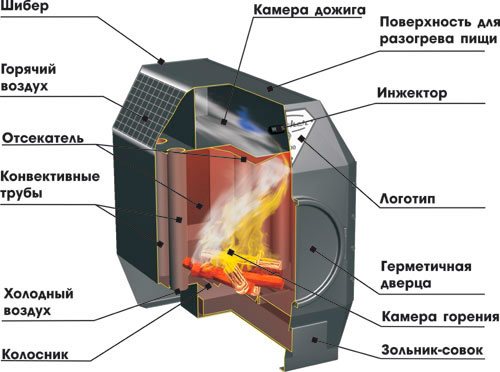

Most pyrolysis ovens can operate both in normal mode and in continuous burning mode., it all depends on the position of the air damper. Fuel consumption depends on the selected mode: with active combustion, one load of firewood burns out in about an hour, in pyrolysis - in 3-4 hours, which allows you to quickly heat the room in the evening, and set the pyrolysis mode at night. As a result, the stove will be hot until morning.
Cast iron stove-potbelly stove
The first type of cast-iron stove has two chambers - the first for the accumulation of ash, that is, already processed material, the second for loading the fuel itself.
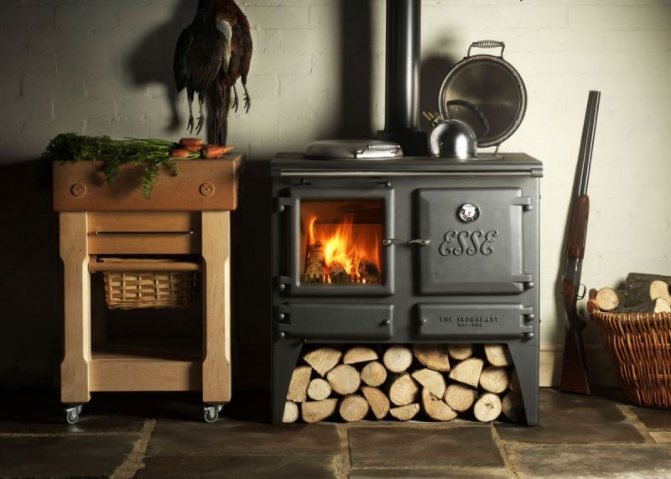

The stove is connected to the chimney using a special pipe outlet.
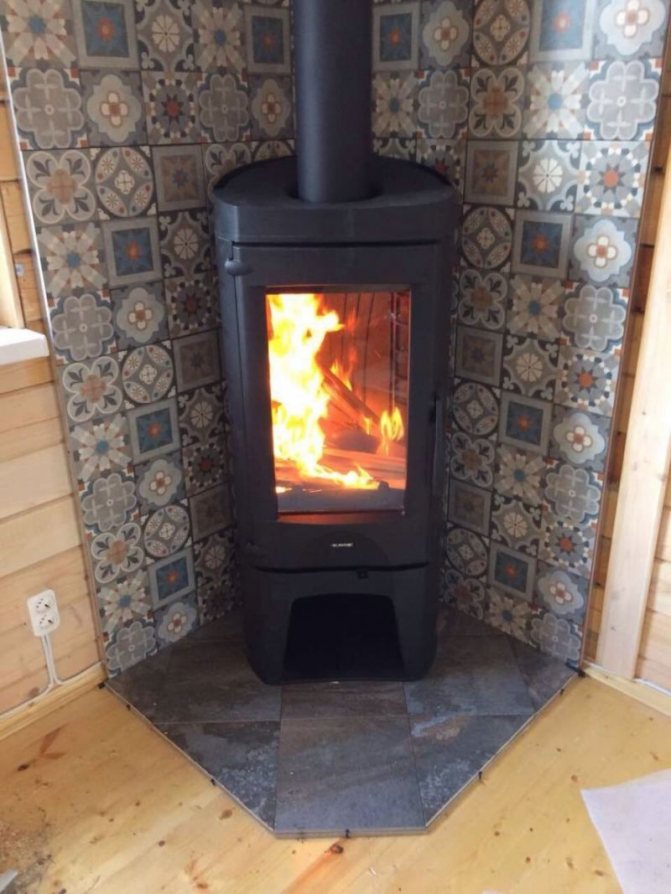

Combustion air enters through a special bolt, which opens slightly during heating. This type of oven has a very weak power.
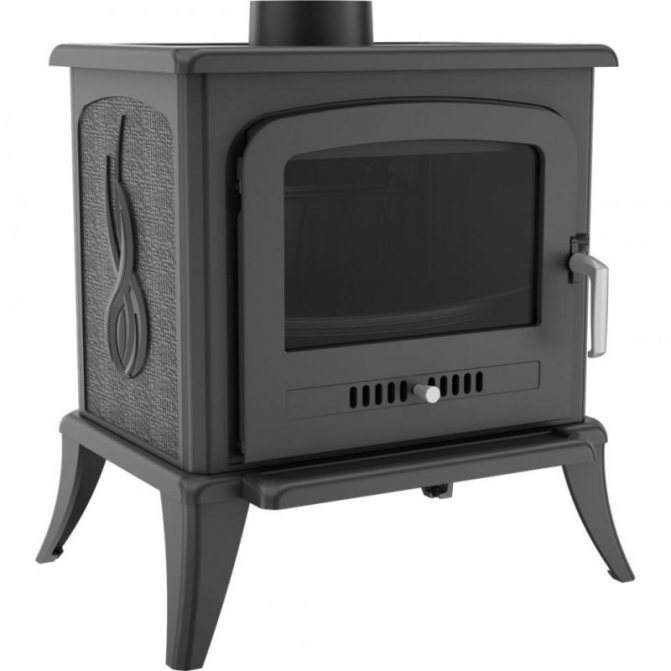

Types of country stoves
Each option has advantages and disadvantages. Consider the features of various designs.
Cast iron stoves
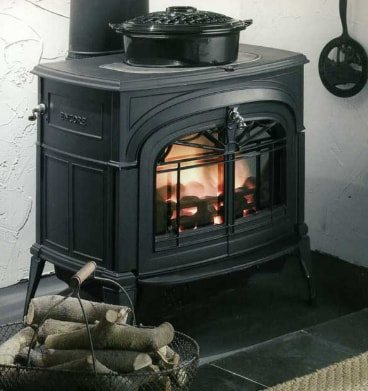

Figure 3. Cast iron stove
A very good, though not cheap solution. Cast iron stoves can boast of more than one advantage. For example:
- "Indifference" to the off-season; even long downtime in work does not respond with problems - the material does not burn out and does not oxidize;
- wood-burning summer cottage cast-iron stoves are characterized by excellent heat transfer - the structure gives off heat to the room well and for a long time;
- cast iron does not rust - even a damp room will not lead to corrosion of the material;
- manufacturers love this option - you can find completely different models on sale; it does not matter what taste the consumer has - he will definitely find a model “for himself”; cast iron products are produced in various dimensions - both small and voluminous summer cottages will receive a stove in accordance with their dimensions;
- most of the cast-iron models are distinguished by the presence of an overall hob; thanks to this, the owner of the structure can simultaneously manage two or three elements of kitchen utensils.
Without minuses anywhere. Among the disadvantages:
- massiveness; cast iron stoves are heavy and require a strong base; if the dacha has a low-strength wooden floor, you will need a brick or concrete foundation / pedestal; at the same time, the base should have a considerable area - usually it extends beyond the perimeter of the unit up to half a meter; the foundation is also necessary for fire safety reasons - for cast iron, heating to a very high temperature is characteristic;
- stationarity; for the same reason - heavyness - such a structure is very difficult to move; therefore, you will have to forget about easy relocations - to the yard and back;
- the complexity of the "upgrade"; cast iron is extremely reluctant to process; therefore, you need to immediately select a model with the necessary options - later it will be very difficult to add the same water supply register;
- vulnerability to sudden temperature changes; it is highly discouraged, for example, to douse a hot panel with cold water - there is a high probability that the stove will crack;
- high cost; having a whole series of advantages and being difficult to manufacture, such a design cannot be cheap; however, given the durability of such a solution, this point is unlikely to be taken seriously.
Steel furnaces
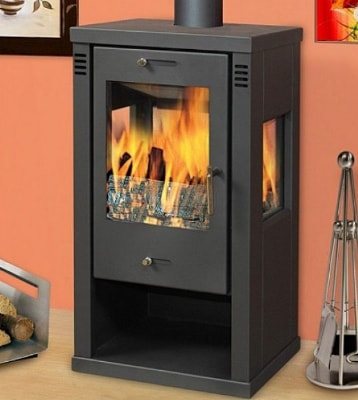

Figure 4. Steel stove Perhaps this is the best option.Whether it is true or not, it is up to a specific consumer to judge based on the set of pluses and minuses of steel.
Advantages:
- availability; factory models are relatively inexpensive, and handicraft options are even cheaper;
- the possibility of self-production; if you have some skills and some tools, the steel unit can be made with your own hands;
- ease; this is a stove for mobile heating of a summer cottage - the structure is relatively easy to move; you just need to disconnect the chimney, and the weight is not a big problem; for the same reason, steel equipment does not require the construction of a solid foundation - installation of a sheet of metal or an asbestos gasket is enough;
- quick and high-quality heating of the hob; the surface quickly heats up to a suitable temperature and, more importantly, cools down for a long time;
- an abundance of factory models equipped with ovens.
Those who decide to install a steel unit will have to face the following disadvantages:
- shorter than in other cases, the operational period; although in the context of dacha use this is not such a drawback; since heating periods will alternate with downtime, the material will be covered with an impressive layer of fire-resistant carbon deposits; this layer is the reason for increasing the service life of stoves for country houses to 15-20 years or more;
- the impossibility of using structures designed for spent liquid fuel in suburban conditions; the latter is not only fire hazardous, but also characterized by harmfulness and not the most pleasant smell.
In addition, many steel models that are successfully operated in other conditions are not suitable for summer cottages. The reason is non-compliance with the criteria described above. Many steel options are bulky, long heating, not very attractive design, no hob.
But from those options that still meet the criteria, it is easy to choose a model according to an individual presentation.
Brick ovens
A brick heating structure in a country house is no less appropriate than in a residential one. Provided that the oven does not take up too much space.
Advantages of the "brick":
- high heat capacity; such a design will give off heat for a very long time - like no other;
- reliability and durability; being folded according to all the rules, the stove will not fail and will serve for a very long time;
- fire safety; the heat source is reliably hidden in the depths of the structure, and competent execution guarantees tightness;
- multifunctionality; if the dacha is not deprived of space, the owners of the building can easily afford the traditional Russian model with a stove bench - this will add coziness and convenience;
- the possibility of full heating of several rooms without the need to install a heating circuit.
Disadvantages:
- "Dislike" for off-season downtime - vulnerability to dampness; if the room has not been heated for a long time, the operation of the stove should be started with a pair of warm-up ducts with a low load;
- the need for a strong foundation that is separated from the base of the walls; a brick oven for a country house is too massive, therefore, a solid overall base is required;
- "Gluttony" in terms of space; usually such designs imply the need for a considerable area; although vertically oriented options are a solution for small buildings.
On a note! It should be borne in mind that brick heating structures are less fire hazardous than others. Therefore, in the room, a greater compactness of the arrangement of objects is possible. This partly compensates for the dimensions of the ovens.
Variations of brick ovens
Some summer residents are faithful to traditions and prefer exclusively brick ovens. There are 3 main types of the latter.
Russian... Often performed in the format of a model with a stove bench.It is characterized by the ability to heat a large area. This is facilitated by high efficiency and bulkiness - "classic" implies dimensions of at least 1500x2000 mm. This option is best suited for those who seek to comply with domestic traditions.
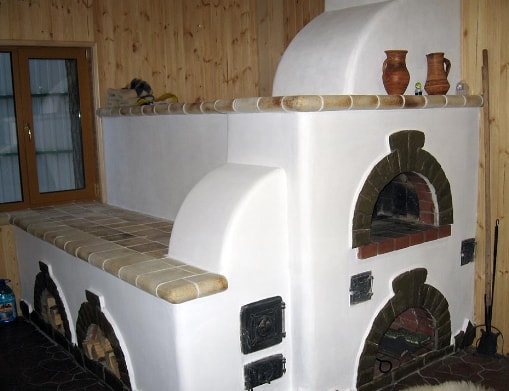

Figure 5. Russian stove
Swedish... The width of such a structure is usually small, although the structure is not deprived of length. Like Russian, it is used for heating and cooking purposes. A universal - budget and practical - solution.
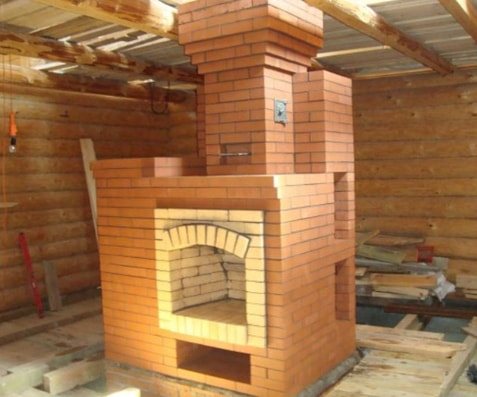

Figure 6. Swedish oven
Dutch... It is characterized by economy and compactness - an excellent option for a small house. But the "Dutch" is usually designed only for heating - you cannot cook food on it. Although it is possible to build a multifunctional structure.
But the system of chimney ducts is thought out very well - with such a stove, you don't have to think too much about the problem of carbon monoxide. Despite its modest dimensions, the structure is capable of heating a room with an area of 40-60 m2. Summer residents who are ready to bring food with them should think about this variation - it will save both space and finances.
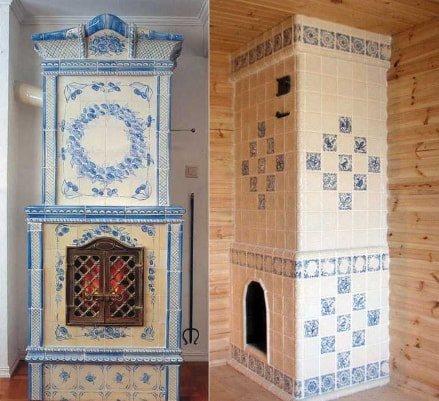

Figure 7. Dutch oven
In terms of efficiency, the last two options win. It is better to order the laying of the stove by a professional, but if you wish, you can build it yourself. Our site has information on how to do this.
Long burning ovens
But long-burning stoves are the most rational version of a cast-iron heating unit.
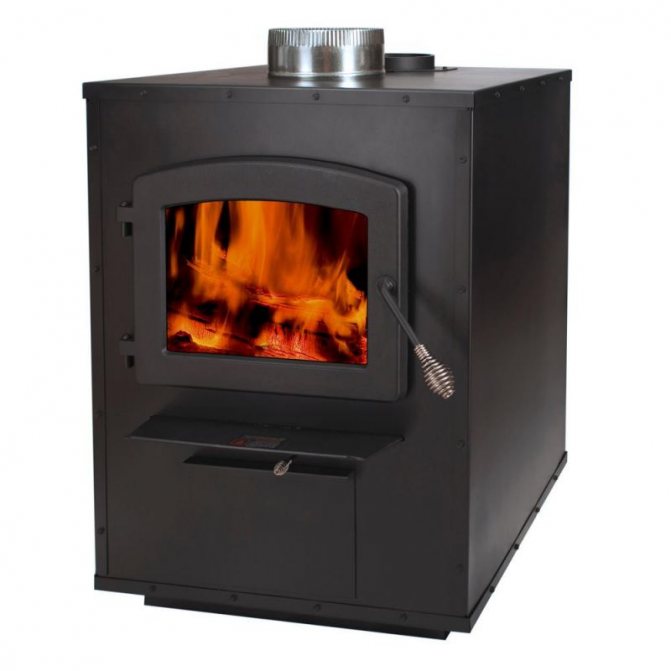

In their system, there is a special compartment for the afterburning of gases separated during the combustion of wood. This helps to keep warm for much longer and thus saves fuel.
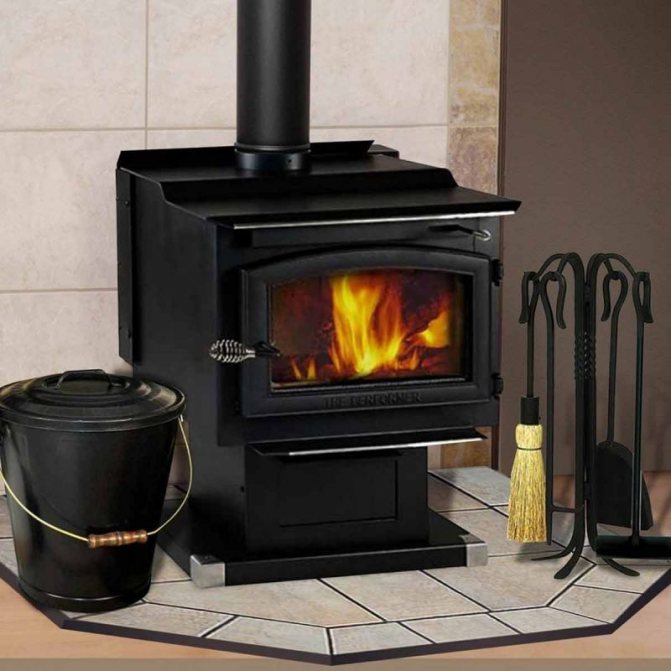

Heater selection criteria
A cast iron stove for a summer residence in any version can be operated continuously or periodically, with long downtime. Online stores offer a wide range of models from domestic and foreign manufacturers. When choosing a stove, pay attention to the following parameters
:
- Fuel requirements. Convection stoves, stoves, including those with a hob, are capable of operating on almost any solid fuel - this is their great advantage, since it simplifies the search for an inexpensive and affordable energy carrier. In fireplaces and stoves of long burning, only firewood can be burned, in rare cases, fuel briquettes are allowed, while wet fuel sharply reduces the efficiency of the unit.
- Appointment and dimensions. A unit with a hob is ideal for installation in the kitchen - a fireplace will decorate and warm the living room of a country house. A heating stove with a water circuit will provide heat to several rooms if a radiator system is installed. Compact and collapsible units are suitable for small country houses - their dimensions are so small that the stove can be transported in a car.
- Power. Having decided on the type and size of the heater, a model of suitable power is selected. The product passport indicates what area the unit is capable of heating. When it comes to conventional models that heat the air, the unit of measure is the volume of the room.
- Additional functions, finishing. The variety of wood-burning stoves for heating a country house allows you to choose a model with a finish that matches the interior of the room. Additionally, the unit can be equipped with an oven, drawers.
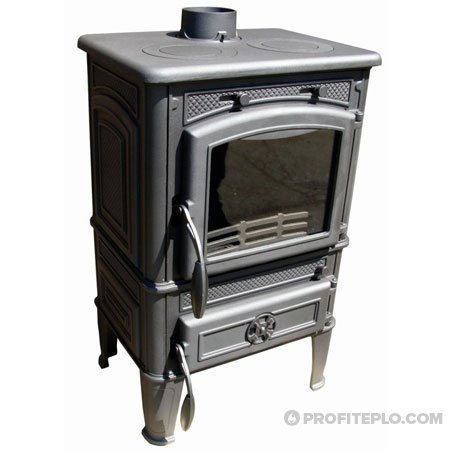

Cast iron heating element with hob
What are good and not so good ovens
Each item has its own advantages and disadvantages. In some ways, cast iron stoves are much better than other options, but in some ways worse. In order to understand whether to make a choice in favor of such a design, you need to figure it out specifically.
Cast iron keeps heat for quite a long time even after the stove goes out, so it is possible to keep the heat away from home for a while.In addition, savings occur, this is especially noticeable in long-burning cast iron stoves.
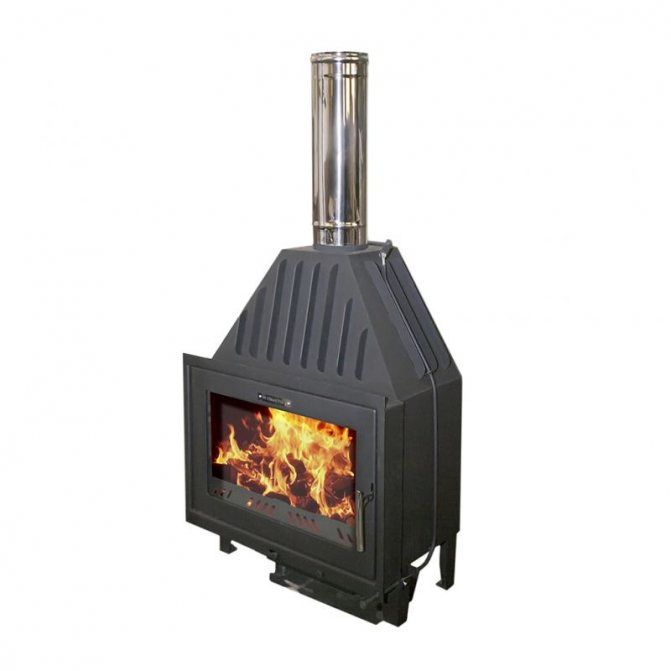

The second plus is a long service life, which on average for cast iron products is from 40 years.

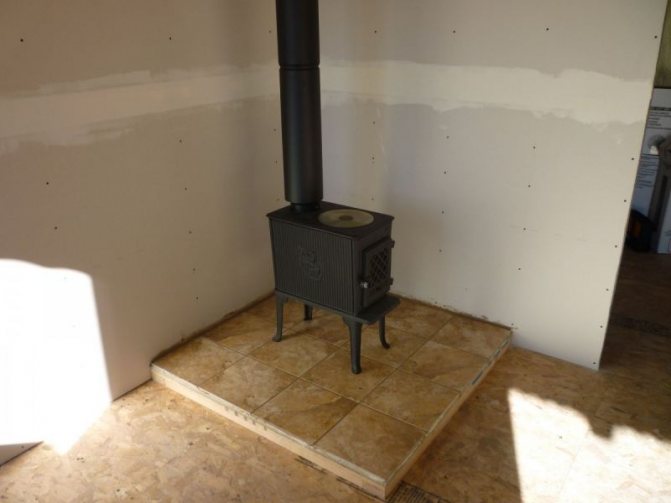
Stove-stove - types, scheme of work, advice on choosing, prices and installation features (135 photos)- Heating and cooking stove - projects and drawings of the best brick heating and cooking models (100 photos)

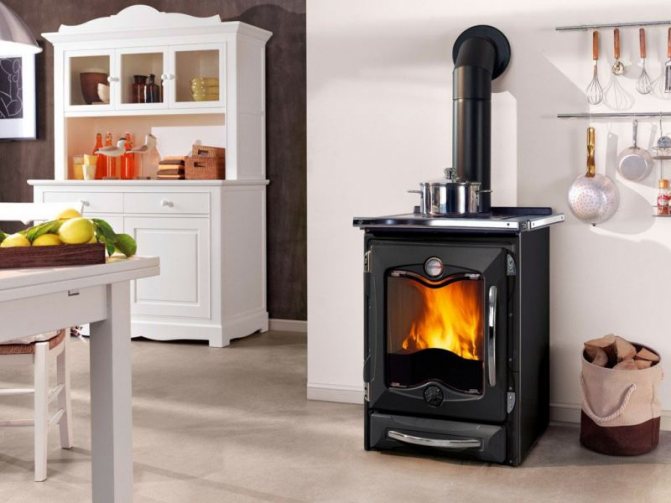
Metal stoves: the best models, the use of heating devices and their characteristics (120 photos)
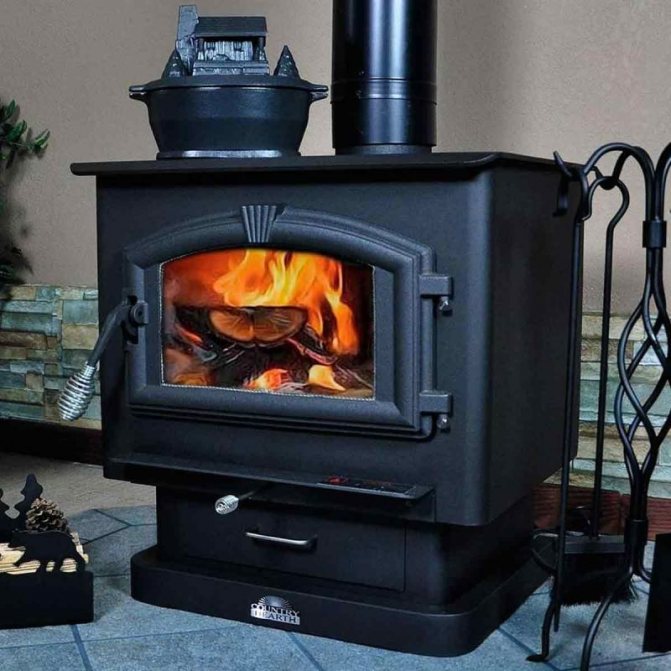

Under the influence of mixed types of ash, this version of the furnace systems does not collapse like any other metal.
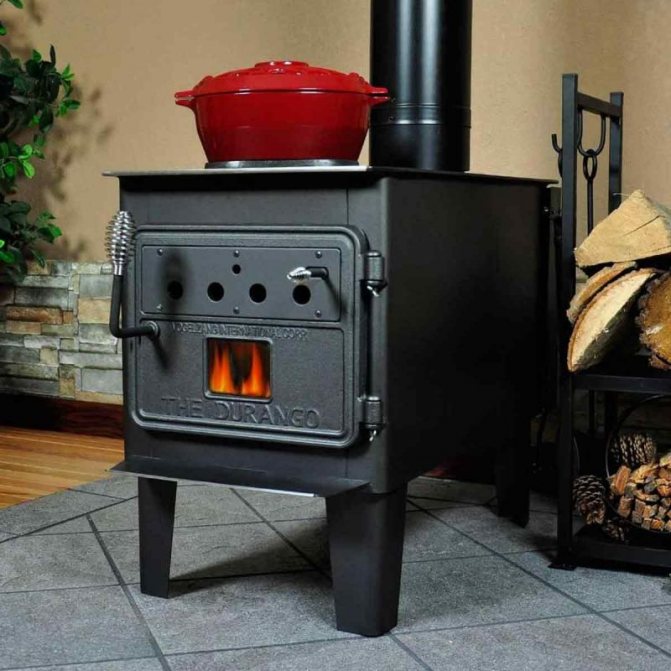

The appearance of such stoves is very original and will always fit into the interior of a country house.
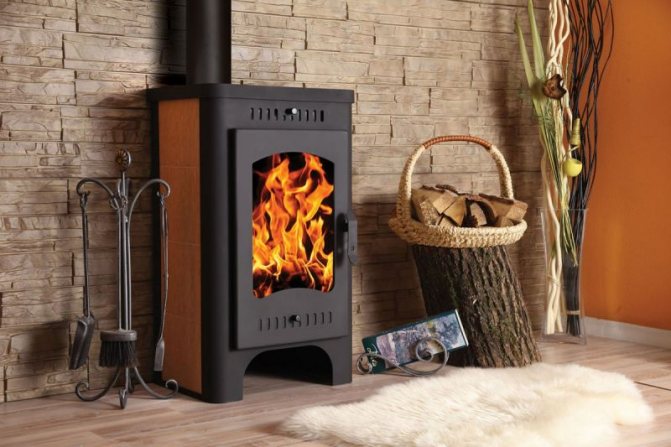

As for the shortcomings, their cast iron plates are also not without. The biggest drawback is the high price for cast iron heating stoves.
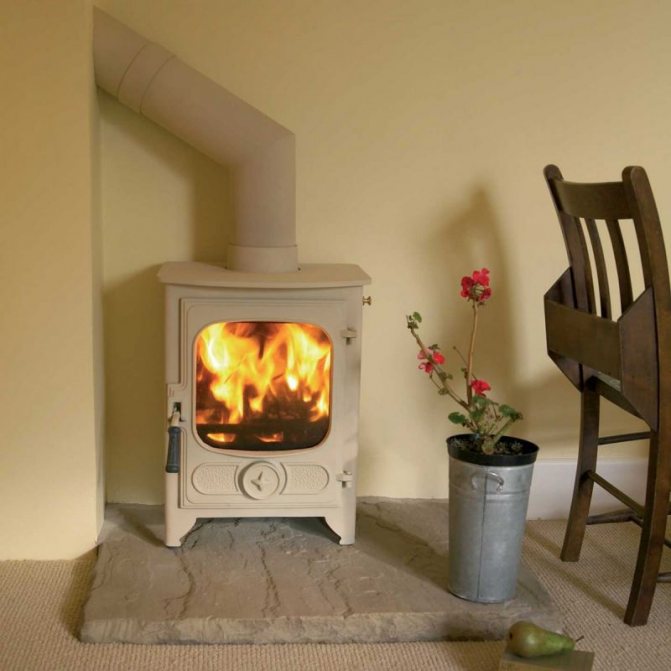

In addition, it should be noted that in addition to the long cooling, the walls of the unit heat up for a very long time. Another point is the large weight of cast iron, which is obtained due to the thick walls.
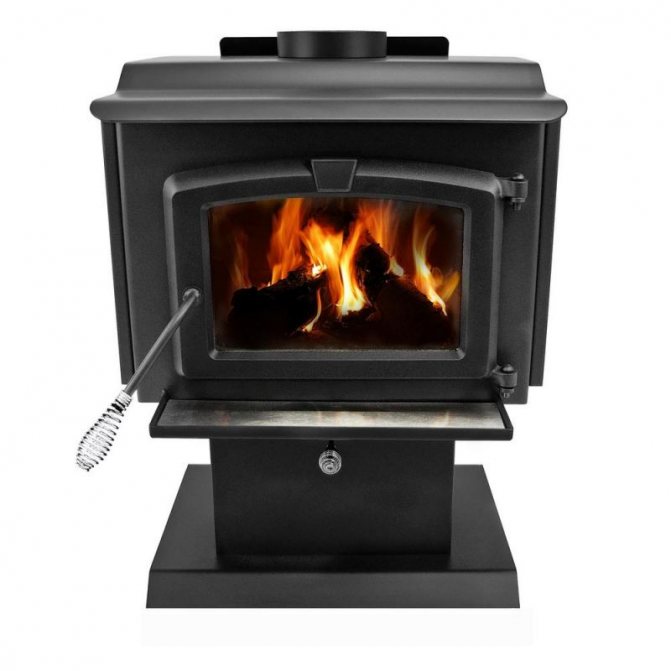

Positive and negative sides of cast iron stoves
As you know, cast iron is a very durable material. Also, a wood-burning stove based on cast iron is able to retain heat in the room for a certain period of time after the wood has burned out in the firebox. Cast iron units have other positive aspects:
- First of all, it is, of course, durability. Such a stove can last about 30-35 years. A great advantage of cast-iron aggregates from metal ones is the ability of the former to resist corrosion for a long time;
- When the effect of condensation occurs, the walls of the cast-iron furnace cannot be destroyed;
- Cast iron stoves, whose purpose is to heat country houses, have an original design;
- Due to the thick cast-iron walls of the units, heat is retained for a very long time.
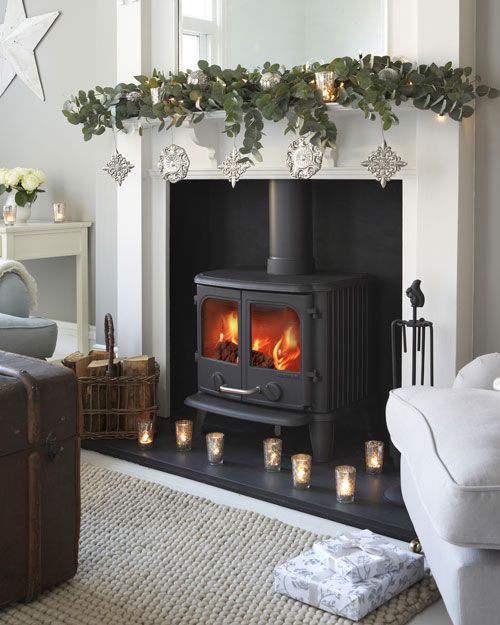

Unlike stationary brick ovens, a compact cast iron oven can be installed anywhere, and the distinctive aspect is also that the cast iron unit does not require the use of a special foundation in its equipment.
Thick walls of a cast-iron base firebox can be called a double-edged sword. Yes, they really cool down for a long time, but the time it takes to warm up is long enough.
A significant disadvantage of the units, which scares off many users, is the price. To purchase a cast-iron "heater" for a country house, you will need to pay 60-100% more than for a steel stove. If we talk about other disadvantages, then they do not play a special role here:
- The unit has significant weight. This aspect must be taken into account at the time of its placement and installation;
- At the time of using the cooking stove, it is strictly forbidden to spill water on a hot surface, otherwise cracks may occur;
- Cast iron is a brittle material; therefore, the heater may split with a strong impact.
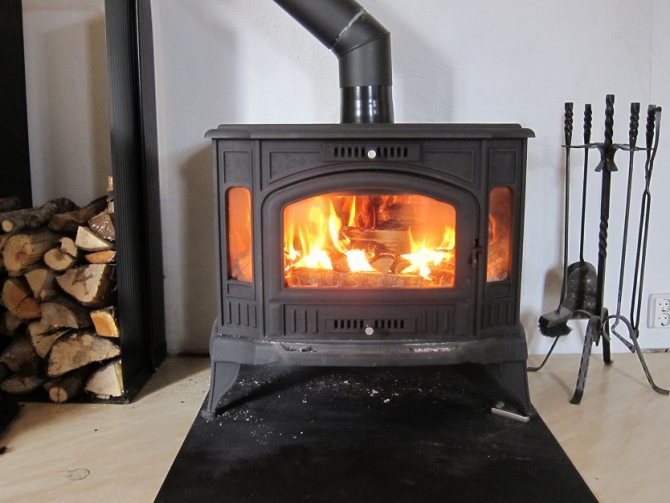

How to choose a stove for a summer residence
Convector options are considered the most convenient stoves for giving cast iron. However, choosing one oven from the huge range of convection ovens is as tricky as the others.

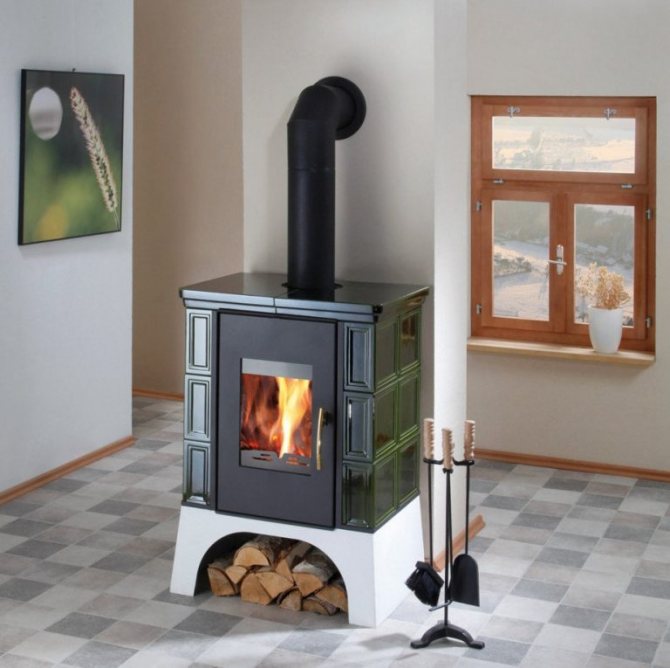
Stove with water heating - the best stoves and circuits with a water circuit. Tips for choosing and installation features with your own hands (95 photos)
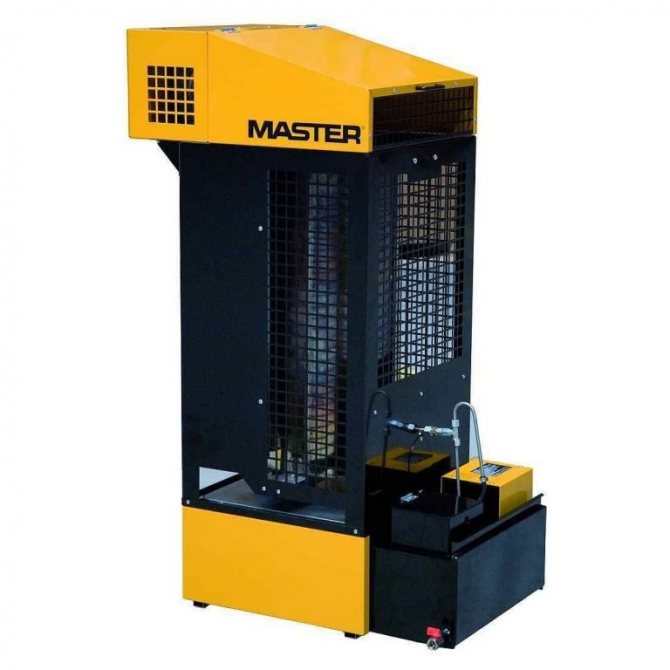
Working furnace - installation, selection and necessary equipment for furnaces working in working out (85 photos and videos)

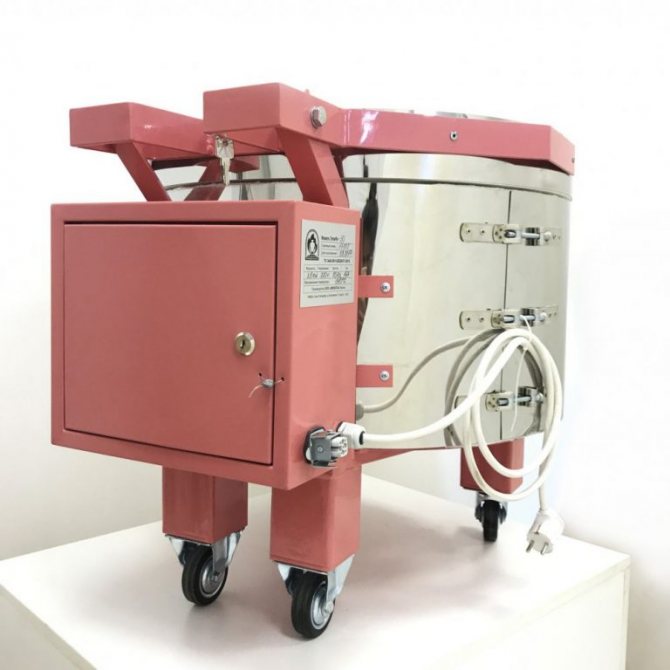
Ceramic kiln for firing - an overview of the best models and tips for their use at home (130 photos)
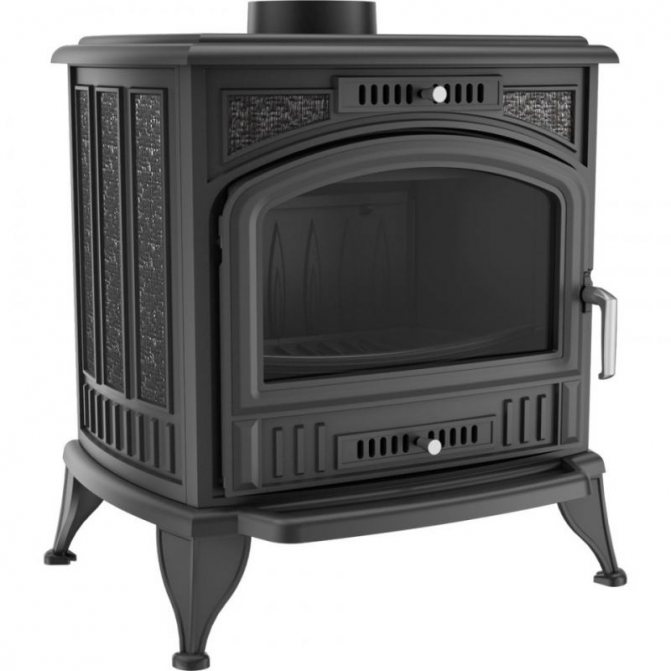

To make the right choice, you need to define several different parameters.
The most important thing is to determine the power of the heater. The power of the heater is always indicated on it and the size of the room to be heated.
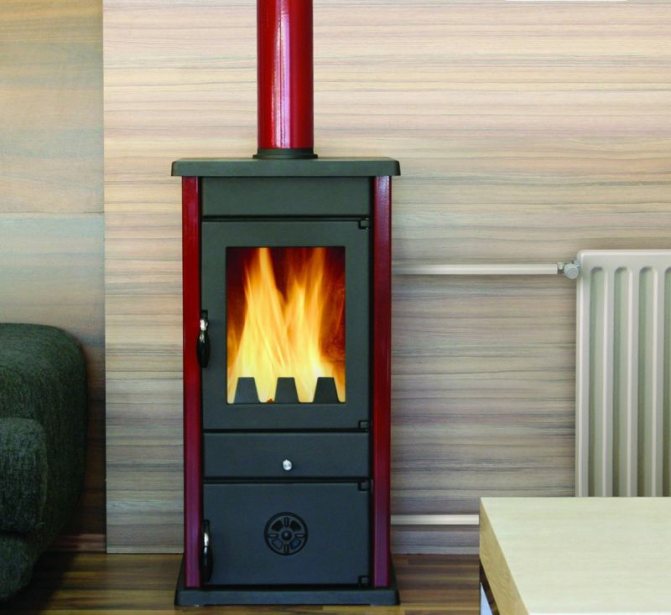

In addition, you need to pay attention to the size and purpose of the oven.
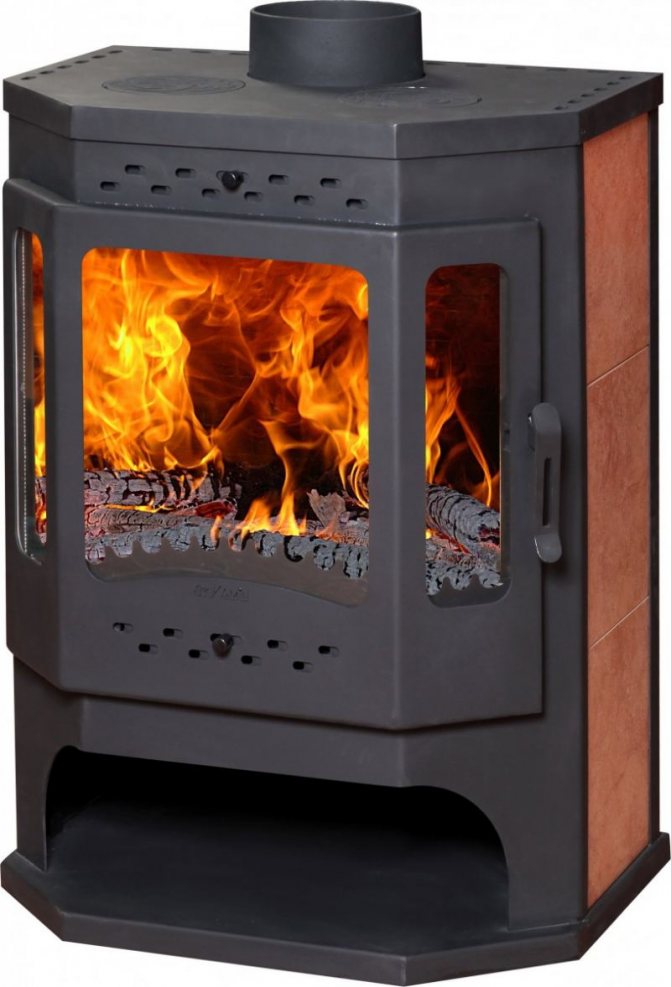

Another selection rule is the definition of additional functions that the stove should have. For example, the presence of an oven or hob. Thus, the choice of a cast iron stove for home or summer cottages is not at all difficult.
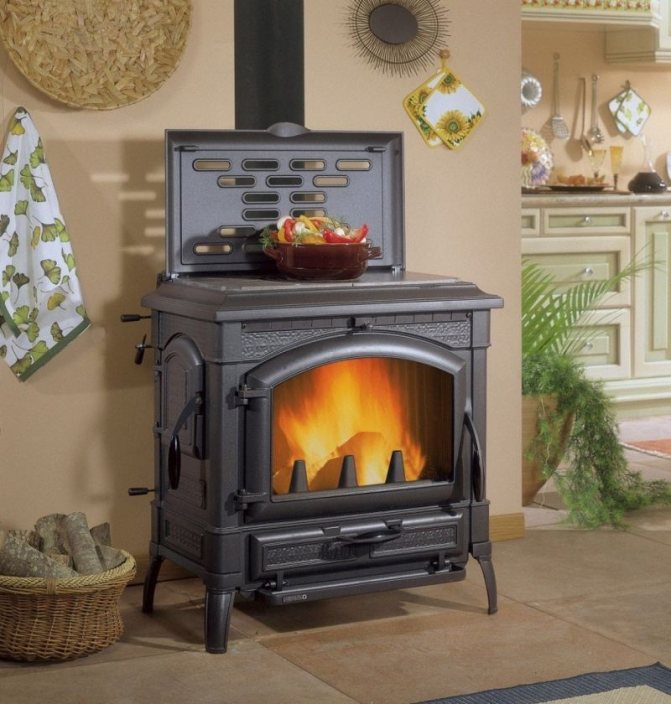

Types of cast iron stoves
By design, wood-burning stoves for summer cottages can be conditionally divided into two types: traditional and long burning. The division is conditional for the following reason: manufacturers are trying in every possible way to increase the efficiency and duration of the heaters from one bookmark of firewood, therefore, even in simple products, various technical solutions are introduced. Thus, the line between some and other ovens is very blurred.
The potbelly stove is rightfully considered the ancestor of all iron stoves. She came to us from the end of the nineteenth century, was distinguished by low efficiency (15%) and incredible fuel consumption. This did not become an obstacle to its use at the present time, since the potbelly stove found a second life thanks to several improvements. Accordingly, a potbelly stove is a modern traditional direct-burning wood-burning stove.
Initially, the cast-iron stoves of the potbelly stove were a rectangular case with legs with a chimney pipe located in the back and directed upwards. There was a loading door in front, but there were no grates, firewood was burned right on the bottom of the stove. At the same time, the lion's share of thermal energy flew into the chimney, since the extraction of heat from the combustion products was not provided. Now, in all stove stoves, a cast-iron grate is installed, and an ash chamber with an additional door or a pull-out ash drawer is arranged under it.
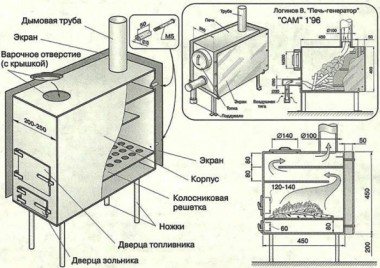

To extract heat from the combustion products inside the furnace, they began to provide for partitions of various designs, trapping the exhaust gases and forcing them to go through a winding path and make several moves in different directions. This method allows for efficient heat exchange and more energy to heat a summer cottage. Many manufacturers began to install a fireproof glass window in the loading door, giving the stove an aesthetic appearance.
For the sake of increasing functionality, water heat exchangers and hobs were built into the potbelly stove. Heat exchangers are used of a water-tube type or in the form of a water jacket, as in solid fuel boilers, only the jacket in the stove covers one wall of the furnace, and not all. Thanks to this, a cast iron stove with a water circuit can serve as a water heater for the needs of hot water supply or for connecting a small radiator heating system.
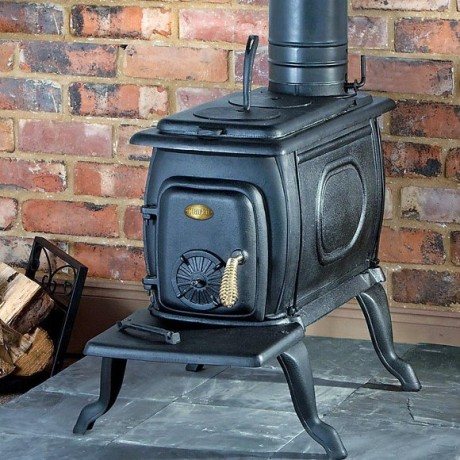

Correct operation
Heating units made of cast iron are durable and easy to operate. The material does not burn out over time, even under the condition of long operating cycles, and is not damaged by corrosion.
To refresh the outer coating of a cast-iron heater without cladding, it is enough to paint it with a special coloring aerosol composition based on an organosilicon base.
Regular cleaning of the firebox and chimney from settled soot, removal of unburned fuel residues from the ash pan will help to extend the operating life of the unit.
... Thorough cleaning is recommended in the spring before the start of the summer season.
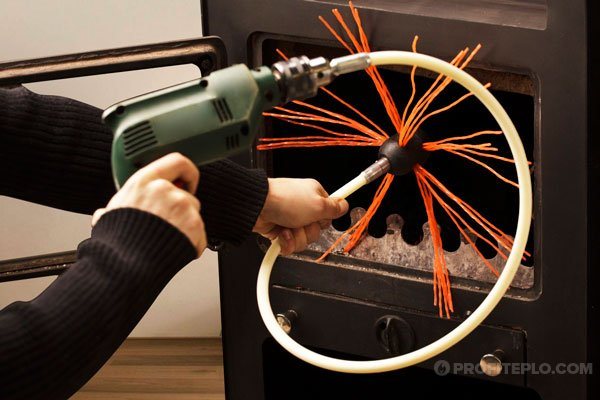

Rotary chimney cleaning kit
The chimney is cleaned mechanically or chemically. In the first case, a special device is used - a ruff, in the second, specialized packages are used that destroy the structure of soot layers during the fire.
When using the hob, avoid contact with cold water and chilled metal objects, as sudden temperature changes cause cracking of the cast iron.
When choosing a heating unit with glass doors, pay attention to the presence of a surface self-cleaning function.If soot settles on the glass, it is removed with special means without abrasive particles.
Try to use large dry wood as fuel - they give maximum heat. Freshly cut wood burns badly, while a lot of soot is emitted, and firewood, chipped into small pieces, quickly burns out.

